Guggenheim Bilbao
description: Museum of modern and contemporary art in Bilbao, Spain
51 results
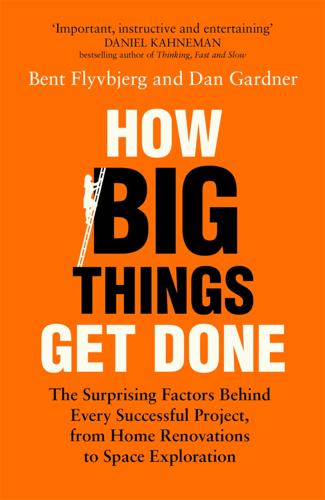
How Big Things Get Done: The Surprising Factors Behind Every Successful Project, From Home Renovations to Space Exploration
by
Bent Flyvbjerg
and
Dan Gardner
Published 16 Feb 2023
In 2007, it was designated a UNESCO World Heritage site, alongside the Taj Mahal and the Great Wall of China, a first for a building whose architect was still alive.1 We have already encountered the second masterpiece. It is the Guggenheim Museum Bilbao. The renowned American sculptor Richard Serra called it “one of the greatest achievements of architecture in the twentieth century.”2 When a 2010 survey asked the world’s leading architects and architecture experts to name the most important works since 1980, the Guggenheim Bilbao was by far the top choice.3 Many people consider the Sydney Opera House and the Guggenheim Museum Bilbao the greatest buildings of the past century. I agree. The design of the Sydney Opera House sprang from genius.
…
His lowest point with the Disney Concert Hall happened to coincide with his rise to international superstardom with the opening in 1997 of the Guggenheim Museum in Bilbao, Spain. That building was immediately and globally recognized as a sensation in modern design, moving architecture to new levels of artistic expression, as mentioned in the main text. Because of the controversy and delays with the Disney Concert Hall, although the Guggenheim Bilbao was started three years after the Disney Concert Hall, it was completed six years before it. The Guggenheim Bilbao therefore forced the issue with political and business leaders in Los Angeles, with local media, and with the general public that if Gehry could build world-class architecture on time and budget in faraway Bilbao, perhaps he could do the same at home in Los Angeles.
…
Few projects start this way. All should. THE BOX ON THE RIGHT Frank Gehry’s most celebrated building—the one that elevated him from the ranks of rising stars to the pinnacle of the architecture world—is the Guggenheim Museum Bilbao. A gallery of contemporary art in Bilbao, Spain, it is a spectacular, glowing building unlike anything seen before, as much of an artwork as those on display inside. Understandably, the Guggenheim Bilbao is often portrayed as the product of nothing more than the architect’s imagination and genius. More cynical observers see it as an example of the “starchitect” phenomenon, in which architects give free rein to their inflated egos and idiosyncrasies.

Lonely Planet Best of Spain
by
Lonely Planet
Published 1 Nov 2016
Many coastal towns have good-value guesthouses run by families. For more on where to stay, see Click here. TOP EXPERIENCE Museo Guggenheim Bilbao Bilbao’s titanium Museo Guggenheim Bilbao is one of modern architecture’s most iconic buildings. It almost single-handedly lifted Bilbao into the international art and tourism spotlight. © FMGB. GUGGENHEIM BILBAO MUSEUM. PHOTO: ERIKA BARAHONA EDE Great For… y Don’t Miss The atrium – the interior counterpoint to the facade’s flights of fancy. 8 Need to Know Map www.guggenheim-bilbao.es; Avenida Abandoibarra 2; adult/student/child from €13/7.50/free; h10am-8pm, closed Mon Sep-Jun) 5 Take a Break The museum has a high-class restaurant Click here, but also try Bistró, with menús from €20.
…
Food is an obsession in this part of the country, whether it’s three-Michelin-starred restaurants of San Sebastián or the fabulous pintxo (Basque tapas) bars in the same city or in Bilbao. And the Basque Country has reinvented itself as one of Spain’s style and culture capitals, with Bilbao’s Museo Guggenheim Bilbao leading the way. In this Chapter Museo Guggenheim Bilbao Pintxos in San Sebastián Bilbao Guernica (Gernika) Lekeitio San Sebastián Oñati Vitoria Basque Country in Two Days With so little time, you’ve little choice but to spend a day in Bilbao with the Museo Guggenheim Bilbao as your visit’s centrepiece, as well as time spent in the town’s old centre and food market. Spend your second day in San Sebastián, sampling some of the best food Europe has to offer and wandering along the sublime Playa de la Concha.
…
Other places, both in Madrid, to see Goya’s works include the Real Academia de Bellas Artes de San Fernando and the Ermita de San Antonio de la Florida; the latter has fabulous ceiling frescoes painted by Goya. o Best Galleries Museo del Prado, Madrid Centro de Arte Reina Sofía, Madrid Museu Picasso, Barcelona Teatre-Museu Dalí, Figueres Museo Guggenheim Bilbao, Bilbao Museo Guggenheim Bilbao, Bilbao / © FMGB. GUGGENHEIM BILBAO MUSEUM. PHOTO: ERIKA BARAHONA EDE Picasso, Dalí & Miró Pablo Ruíz Picasso (1881–1973) underwent repeated creative revolutions as he passed from one creative phase to another. From his gloomy Blue Period, through the brighter Pink Period and on to cubism – in which he was accompanied by Madrid’s Juan Gris (1887–1927) – Picasso was nothing if not surprising.
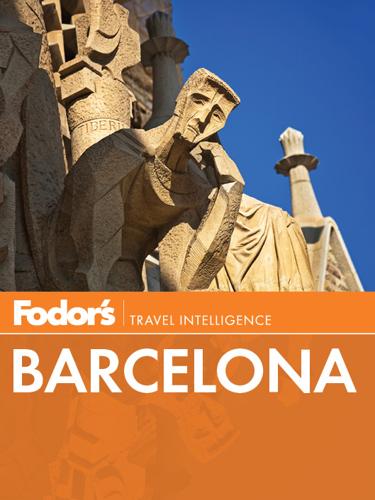
Fodor's Barcelona
by
Fodor's
Published 5 Apr 2011
Previous Chapter | Beginning of Chapter | Next Chapter | Contents Main Table of Contents Introducing Bilbao Bilbao Planner Getting Around Exploring Bilbao Where to Eat Where to Stay Nightlife and the Arts Sports and the Outdoors Shopping Previous Chapter | Next Chapter | Contents Top Reasons to Go | Getting Oriented By George Semler When Frank O. Gehry’s Museo Guggenheim Bilbao opened in 1997, few would have predicted that an art museum would be able to singlehandly transform Bilbao’s character and economy from a dreary post-industrial pit to a dazzling cultural tourism and design destination. No single art and architecture monument has ever so radically changed a city as the Guggenheim did with Bilbao. Even the Basque Country’s longtime political and social conflict came to a temporary halt after the Guggenheiming of Bilbao. The city once known as a steel and boatbuilding giant reinvented itself as a cultural capital not only with this art museum, but with a sleek subway system by Norman Foster, a glass footbridge by Santiago Calatrava, and the urban landscape of César Pelli’s Abandoibarra project.
…
Covered with 30,000 sheets of titanium, the Guggenheim became Bilbao’s main attraction overnight. Despite unexpected cleaning problems (Bilbao’s industrial grime knows no equal), which was solved in 2002 using a customized procedure, the museum’s luster endures. The enormous atrium, more than 150 feet high, is connected to the 19 galleries by a system of suspended metal walkways and glass elevators. Vertical windows reveal the undulating titanium flukes and contours of this beached whale. With most of its modern art drawn from New York’s Solomon R. Guggenheim Museum, the Bilbao Guggenheim is a magnet for visitors from all over the world.
…
–Sat. 10–7, Sun. 10–2 | Station: Arc de Triomf, Ciutadella. Port Olímpic. Choked with yachts, restaurants, tapas bars, and mega-restaurants serving reasonably decent fare continuously 1 PM–1 AM, the Olympic Port is 2 km (1 mi) up the beach, marked by the mammoth shimmering goldfish sculpture by Frank Gehry of Bilbao Guggenheim fame (Bilbao got a leviathan; Barcelona got a goldfish). In the shadow of Barcelona’s first real skyscraper, the Hotel Arts, the Olympic Port rages on Friday and Saturday nights, especially in summer, with hundreds of young people of all nationalities contributing to a scene characterized by go-go girls (and boys), fast-food chains, ice-cream parlors, and a buzz redolent of spring break in Cancún. | Station: Ciutadella, Vila Olímpica.
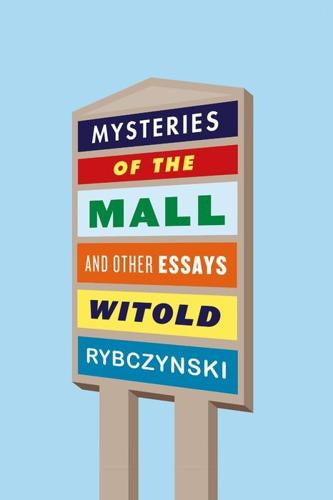
Mysteries of the Mall: And Other Essays
by
Witold Rybczynski
Published 7 Sep 2015
Although they built some striking campus buildings and several high-profile museums, including the handsome Sainsbury Wing of the National Gallery in London, they also lost prominent commissions, notably the Staten Island ferry terminal and the new Philadelphia concert hall. They stuck to their guns, but it turned out that ducks—or rather titanium artichokes, in the case of the Guggenheim Museum in Bilbao—not decorated sheds, were what clients and the public wanted. Frank Gehry is, of course, the architect du jour. The Guggenheim in Bilbao is not only at the cutting edge of architectural design but also a hit with the public. Hundreds of thousands of people have flocked to an obscure Basque industrial city, attracted by his extraordinary sculptural confection of titanium curves.
…
After all, when people say that such and such a city is “lively” or “exciting” or “interesting,” they are really talking about its center, not its residential districts. Architecture plays an important role. Cities have always built monumental buildings—city halls, opera houses, concert halls—but out of civic pride and for local consumption. Now cities erect buildings whose chief aim is to attract visitors. Following the remarkable success of the Guggenheim Museum in Bilbao, which since it opened in 1997 has brought almost five million visitors to that aging industrial port city, the formula for success is clear. Eye-popping architecture + cultural attractions = more tourists. This unprecedented wave of high-profile construction projects has been good for architects; it is less clear how good it is for cities.
…
Traditionally, a building is an icon when it is a popularly recognized symbol of something larger than itself—like the White House, the Eiffel Tower, and the Empire State Building. Architectural icons are generally anointed by the public, sometimes a long time after they are built. So why do developers think that they can create instant icons? Frank Gehry and the Bilbao Guggenheim, that’s why. The Guggenheim Museum in Bilbao, an industrial city in northern Spain, opened in 1997. Using innovative computer technology, Gehry designed and built a structure of striking originality and formal inventiveness. The swirling shapes covered in highly reflective titanium were astonishing, unlike any other building that people had ever seen.
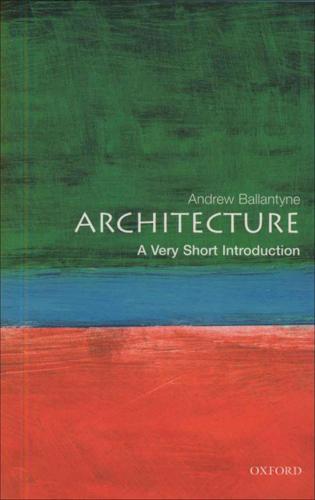
Architecture: A Very Short Introduction
by
Andrew Ballantyne
Published 19 Dec 2002
Kersting 17 Model of Temple of Juno Sospita, Lanuvium – Etruscan temple, according to Vitruvius (5th century BC) © David Lees/Corbis 18 Seagram Building, Manhattan, New York City (1954–8); architects: Mies van der Rohe (1886–1969) and Philip Johnson (born 1906) © Bettmann/Corbis 19 Opera House, Sydney, Australia (1957–73); architect: Jorn Utson (born 1918) © Eye Ubiquitous/Corbis 20 Chicago Tribune Tower, Chicago, Illinois (1923–5); architects: John Mead Howells (1868–1959) and Raymond Hood (1881–1934) Underwood & Underwood/Corbis 21 Métro entrance surrounds, Paris, France (1899–1905); architect: Hector Guimard (1867–1942) © Philippa Lewis/Edifice 22 Expiatory Church of the Sagrada Familia, Barcelona, Catalonia, Spain (begun 1882); architect: Antoni Gaudí (1852–1926) © A. F. Kersting 23 Mausoleum of the Taj Mahal, Agra, India (1630–53); architect: Ustad ‘Isa (dates unknown) © A. F. Kersting 24 Guggenheim Museum, Bilbao, Spain (1997); architect: Frank Gehry (born 1929) Erika Barahona Ede/© FMGB Guggenheim Bilbao 25 Centre Georges Pompidou, Paris, France (1977); architects: Renzo Piano (born 1937) and Richard Rogers (born 1933) © Eye Ubiquitous/Corbis Introduction I met a traveller from an antique land Who said, ‘Two vast and trunkless legs of stone Stand in the desert.
…
He once made an armchair by gluing corrugated cardboard into a large block, and then modelling it with a chainsaw. 24. Guggenheim Museum, Bilbao, Spain (1997); architect: Frank Gehry (born 1929). Frank Gehry was born in Canada, first moved to California as a student, and then settled and started an architectural practice there, initially making fairly conventional designs. His experimental work, starting with his own house in Santa Monica, has taken him in the direction of designing buildings that have more in common with the traditions of sculptural form than with architecture. The design for the Guggenheim Museum in Bilbao is spectacular and eye-catching, and has helped to draw international attention to a provincial Spanish city, establishing it on the cultural map of the world.
…
In many respects it exactly reverses the attitudes to Indian culture on display at the Brighton Pavilion (Figure 3) where the idea of India is conjured up as an exotic fairyland. At Chandigarh we have an image of India, or more specifically the Punjab, as a modern working state that has a serious role to play. The Guggenheim Museum in Bilbao belongs very securely in the realm of global tourist culture (Figure 24). It is a building that has had importance in reviving the fortunes of a small city, by making it a place that people from all over the world want to visit. The benefits to the city are much greater than the cost of the building, extravagant though that might seem.
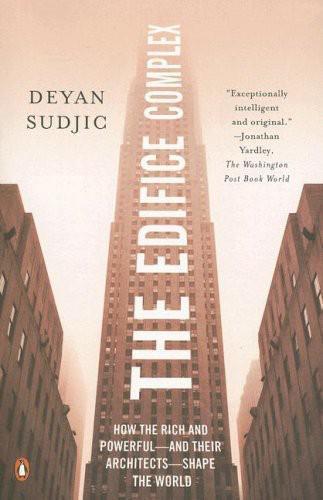
The Edifice Complex: How the Rich and Powerful--And Their Architects--Shape the World
by
Deyan Sudjic
Published 27 Nov 2006
Among them was a close friend of Koolhaas’s, Charles Jencks, the American son-in-law of the governor of a British colonial bank in Shanghai during the communist victory of 1949, whose book on postmodernism was first translated into Mandarin in 1986. According to Jencks, ‘The rhetorical part of the brief was describing the Guggenheim in Bilbao… Though height was not mentioned, they clearly wanted a landmark.’ Jencks recalls his initial caution. ‘I was afraid of being duped, that whatever I said would be used to endorse what might turn out to be a different outcome from the jury’s decision.’ He was eager to depoliticize what some see as an essentially political process.
…
To judge by her horses, executed in a manner that might owe something to the animators of the Lord of the Rings trilogy, Goodnight is backing into territory occupied by Jeff Koons. Her work is no doubt every bit as sincere, even if it is less famous and less knowing than that of the man who put a giant topiary puppy outside the Guggenheim in Bilbao. But her attempt to capture the spirit of a divided country liberated from the Stasi yoke in the form of a pack of horses – roaming through Berlin, pawing at the ground in front of the Brandenburg Gate and getting in the way of the traffic – is just maladroit. Casual observers might conclude that Goodnight’s sculpture has been attacked by a gang of anarchic Texan troublemakers wielding spray cans.
…
This particular project began as an invitation to remodel an existing house in Lyndhurst, Ohio, and was eventually abandoned, ten years later, after the design had ballooned into an all-new fantasy palace sprawling over no less than 42,000 square feet. The unbuilt house gets twelve pages in the catalogue, second only to the Guggenheim in Bilbao with fourteen. Gehry tactfully suggests that the Lewis project allowed him to explore the themes that have shaped his work ever since. People who commission Frank Gehry to design houses for them are a group unlike any other. Among their characteristics, self-doubt is conspicuous by its absence.
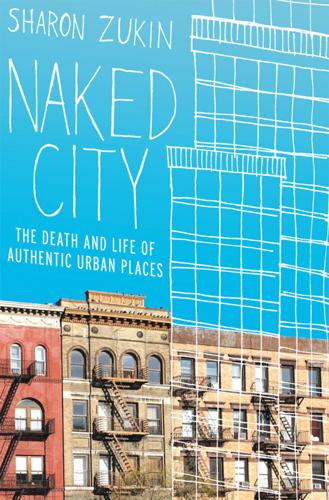
Naked City: The Death and Life of Authentic Urban Places
by
Sharon Zukin
Published 1 Dec 2009
New York had the skyscrapers of the World Trade Center and will have Freedom Tower; a half-dozen Asian cities have already built or are building taller towers. In the 1960s France created the Centre Pompidou for modern art in the rundown Beaubourg area of Paris partly in response to the postwar success of the Museum of Modern Art in New York City; twenty years later the Basque regional government in Spain built another museum of modern art, Guggenheim Bilbao, in a rundown industrial district in the city of Bilbao, partly because of the Beaubourg’s success in restoring a glow to the image of Paris as a cultural capital. Many cities copy the look and name of trendy New York neighborhoods—with SoHo in Lower Manhattan spawning SoMa in San Francisco, SoWa in Boston, NoMa in Washington, D.C., and SoHo in Hong Kong—and New York–style lofts gracing downtowns from Manhattan to Moscow.
…
It was only one of many projects the artists have created around the world since the 1970s, wrapping huge swathes of fabric around notable sites such as Berlin’s Reichstag and Sydney’s Little Bay: their own transnational luxury brand. The Gates was a high-class variation on the Cow Parade, a temporary version of Guggenheim Bilbao, a way to place the Christo brand for a few weeks in New York City. In a countercyclical offensive, the economic crisis that began with subprime mortgage lending has not deterred public officials from the dream of presenting these installations to tourists and residents as a means of confirming the city’s distinction.
…
See New York City; New York State; state power Gowanus Canal, 168, 174, 190 Grand Central Partnership, 137, 144 Greenfield, Jai Jai, 86 Green Guerillas, 199, 200, 201, 204, 217 Greenmarkets, 116, 117–19, 120–21, 128, 135–36 Greenpoint, 39, 43 Green Thumb. See Operation Green Thumb Greenwald, Drew, 80, 81 Greenwich Village, 8, 13–14, 17, 39, 106 See also East Village; West Village Grittiness, 15, 20–21, 50–54, 228 Guardian Life Insurance Company, 117, 134, 137 Guatemalan Soccer League, 171, 179, 184 Guggenheim Bilbao, 231, 234 Hajer, Maarten, 142 Hannigan, John, 4 Harlem affordable housing in, 26, 82, 93 art exhibitions, 72–73, 93 and authenticity, 70, 76, 82–83, 85–87, 86, 87, 92–93, 122 blogs on, 88–92 as capital of black America, 54, 61, 65, 68, 77, 258n.28 community gardens in, 196, 206 cosmopolitanism of, 67, 68, 93 crime rates, 74, 80, 89 cultural heritage of, 66, 72, 86, 87 as “dark ghetto,” 65, 70–72, 73, 75, 76, 78, 79, 87, 89, 90, 93, 94 demographics, 68–69 drugs in, 72, 73, 74, 79–80, 135 film portrayals of, 71–72, 256n.19 food markets in, 77, 79, 116 gentrification of, 8, 74–75, 81, 87, 89, 92, 122, 184, 221 government ownership in, 74, 77, 199 images, 64, 69 map, 66 media coverage of, 67, 87–88, 93, 259n.40 public housing projects, 70, 89 redevelopment of, 75, 77–87, 202, 206 restaurants in, 20, 63–65, 66–67, 93 retail entrepreneurs in, 65, 69, 70, 77–82, 84–87, 88, 97 rezoning in, 74, 82–83, 88 street vendors, 77, 79, 83 whites in, 65, 68, 70, 74, 87 See also Harlem Renaissance; 125th Street Business Improvement District; Upper Manhattan Empowerment Zone “Harlem on My Mind” (exhibition), 72–73, 93 Harlem Renaissance first, 65, 75–76 second, 65, 69–70, 77–88, 93 Harlem USA, 80, 81, 85 Harlem Vintage, 86 Harvey, David, 232 hip-hop music, 54, 55–56, 57 hippies.
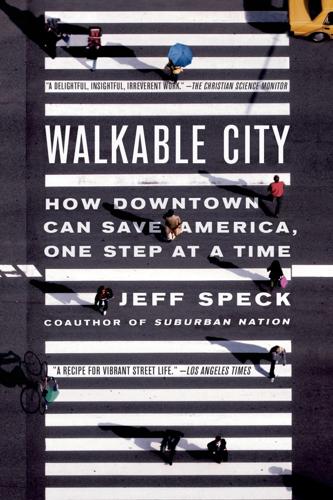
Walkable City: How Downtown Can Save America, One Step at a Time
by
Jeff Speck
Published 13 Nov 2012
He was unmistakably shooing or waving the questioner away from the microphone, as an inferior—again, in a gesture hardly ever seen in post-feudal times.7 Gehry was clearly having a bad day, but his imperiousness is worth recounting as a metaphor for some of his work—not all, but some. Kent was no doubt recalling his son Ethan’s visit to Gehry’s masterpiece, the Guggenheim Bilbao, an experience he describes in the Project for Public Spaces website’s “Hall of Shame.” After failing to find the front door and taking note of the treeless, depopulated plaza, Ethan observed a mugging, something he later learned was common there. He adds, “In the span of 10 minutes that we spent around the museum, I witnessed the first mugging of my life—and I’ve lived my entire life in New York City.”8 Robberies are no longer very common in New York, but the same goes for Bilbao—except for certain problem places.
…
Jan Gehl, Cities for People, 88. 2. Ibid., 137. 3. Ibid., 77. 4. Ibid., 151. 5. Andres Duany, Elizabeth Plater-Zyberk, and Jeff Speck, Suburban Nation, 175–78. 6. Chris Turner, “What Makes a Building Ugly?” 7. James Fallows, “Fifty-Nine and a Half Minutes of Brilliance, Thirty Seconds of Hauteur.” 8. Ethan Kent, “Guggenheim Museum Bilbao,” Project for Public Spaces Hall of Shame. 9. Léon Krier, The Architecture of Community, 70. 10. Jane Jacobs, The Death and Life of Great American Cities, 291. 11. David Owen, Green Metropolis, 178. 12. Ibid., 181. 13. Jacobs, 91. 14. Ibid., 91n. STEP 10: PICK YOUR WINNERS 1. Andres Duany, Elizabeth Plater-Zyberk, and Jeff Speck, Suburban Nation, 166. 2.
…
“NYCHA Chairman: Parking Minimums ‘Working Against Us.’” streetsblog.org, October 17, 2011. Keates, Nancy. “A Walker’s Guide to Home Buying.” The Wall Street Journal, July 2, 2010. Keen, Judy. “Seattle’s Backyard Cottages Make a Dent in Housing Need.” usatoday.com, May 26, 2010. Kent, Ethan. “Guggenheim Museum Bilbao.” Project for Public Spaces Hall of Shame, pps.org. Klotz, Deborah. “Air Pollution and Its Effects on Heart Attack Risk.” The Boston Globe, February 28, 2011. Koch, Wendy. “Cities Roll Out Bike-Sharing Programs.” USA Today, May 9, 2011. Kolbert, Elizabeth. “XXXL: Why Are We So Fat?” The New Yorker, July 20, 2009.

The Secret War Between Downloading and Uploading: Tales of the Computer as Culture Machine
by
Peter Lunenfeld
Published 31 Mar 2011
Aaron Koblin makes a live-action video for Radiohead’s song “House of Cards” without cameras or lights, using 3-D tracking technologies that create data streams that viewers/users can then remix with new angles and visuals to post to YouTube. The green-on-black datascapes in The Matrix films simultaneously virtualize and realize the Wachowski Brothers’ pop mysticism. Even Frank Gehry’s Guggenheim Bilbao and Disney Concert Hall, those most sensuous of twenty-firstcentury signifiers, can be seen as manifestations of the CATIA 3-D software used to design them. Ubiquitous computing and geographic information systems are virtual figuring machines, constantly popping out new data points from previously mute spaces and maps.
…
Buckminster, 73–74 Future of the Internet and How to Stop It, The (Zittrain), 83, 188n5 Gaming, 23, 33–34, 188n25 arcades and, 15, 71 consoles and, 71 handheld, 71 interactive, 57 ludic stickiness and, 70–74 rejuveniles and, 67 running room and, 74–77 shooters, 72 Gardner, Howard, 138 Gates, Bill, 144, 162–166, 196n21 Gehry, Frank, 39 “Gentle Art of Reperceiving, The” (Wack), 112 Geodesic domes, 73 Gernsback, Hugo, 109 “Gernsback Continuum, The” (Gibson), 110 Gerritzen, Mieke, 102 Gestalt psychology, 42–43 Gibson, James Jerome, 16 204 INDEX Gibson, William, 110, 131 Gillespie, Dizzy, 25–26 Gish, Lillian, 61 Gladwell, Malcolm, 43 Global Business Network (GBN), 113, 115, 191n18, 192n20 Global Positioning System (GPS), 81, 101 Gmail, 176 GNU, 171, 173 God’s eye view, 33–34 Golden Nica, 169–170 Googie diners, xi Google, 197n29 Adstar and, 177 Blogger and, 177 brand building and, 177 Doubleclick and, 177 home page of, 176–177, 197n30 Searchers and, 144, 174–177 Stanford and, 149 Web 2.0 and, 177 YouTube and, 177 Google Maps, 176 Googleplex, 177 Gopher, 169 Gorky, Maxim, 103 “Got Milk?” campaign, 31 Gould, Stephen Jay, 133 Graphic design, 31, 45, 64, 102, 181n7 Graphic user interface, 161 Great Depression, 107 Great Wall of China, 75 Greek myths, 75, 175 Greenwich Village, 84–85 Grey Album, The (Danger Mouse), 54–55 Gropius, Walter, 36 Guardian syndrome, 85–86 Guggenheim Bilbao, 39 Gulags, 107 Gutenberg press, 11, 137–138 Gysin, Brion, 52 Habits of mind, 9–10 Hackers, 22–23, 54, 67, 69, 162, 170–173 Hartmann, Frank, 125 Harvard Business Review, 112 Harvard Crimson, 36 Hasids, 135 Headline News (CNN), 58 Heidegger, Martin, 29 Heisenberg, Werner, 37 Hello Kitty, 90 Hewlett, Bill, 145, 157 Hewlett-Packard (HP), 149, 153, 172 Hierarchies cultural, 1, 24, 29, 93, 114 technical, 123, 155, 175–176, 189n8 High fructose corn syrup (HFCS), 4, 7–9, 181n6 Hindus, 135 Hip-hop, 53–54, 61 Hirai, Kazumasa, 108 Hiroshima, 100–101 Hitchcock, Alfred, 44 Holocaust, 107 Homebrew Computer Club, 163 Homer, 28, 93–95 Hope (campaign poster), 31 Hosts Berners-Lee and, 144, 167–169, 175 description of term, xv Stallman and, 170–171 Torvalds and, 144, 167–173 World Wide Web and, xv “House of Cards” (Radiohead), 39 Howe, Jeff, 189n14 Hustlers, 156 description of term, xv desktops and, xv Gates and, 144, 162–166, 196n21 Jobs and, 144, 162–167, 186n12, 196n21 Hypercontexts, xvi, 7, 48, 76–77 Hyperlinking, 52–53, 57, 150 205 INDEX Hypertextuality, 51–53, 108, 145, 150, 158, 166, 168 IBM, 145, 170, 195n11 as Big Blue, 156, 164 Gates and, 164–165 650 series and, 154–155 System/360 series and, 155 Watsons and, 144, 153–157, 165–166 Iliad (Homer), 28 I Love Lucy (TV show), 47 India, 135 Individualism, 13, 98 Information, 98 algorithms and, 46, 144, 174–177 bespoke futures and, 100–101, 124– 126, 190n8, 193n34 culture machine and, 143–149, 152– 153, 163, 167–168, 172, 176–178, 196n17, 197n29 downloading/uploading and, 1, 4, 11 Gutenberg press and, 11, 137, 138 mashing and, 25, 54–55, 57, 74 Neurath and, 125 overload of, 81 peer-to-peer networks and, 15, 54, 92, 116, 126 Shannon and, 148 stickiness and, 22–23, 32–35, 184n15 storage and, 47, 60, 153, 196n17 unimodernism and, 45–49, 55, 60, 65–66, 74 Web n.0 and, 80–81, 92 World War II and, 146–147 Information overload, 22, 149 Info-triage, xvi, 20–23, 121, 132, 143 Infoviz, 58 Intel, 149, 156 Intellectual property copyright and, 54, 88–95, 123, 164, 166, 173, 177 Mickey Mouse Protection Act and, 90 public domain and, 91 Interactive environments, xiv, 24, 39, 57, 69, 71, 83, 114–119, 126 Intergalactic Computer Network, 108, 152, 168 International System of Typographic Picture Education, 125 Internet, xiii, 180n1, 184n15 AOL television and, 9 development of computer and, 145, 168–171, 174 stickiness and, 15, 22, 27, 30 unimodernism and, 56 viral distribution and, 30, 56, 169 Web n.0 and, 79, 83, 92 Interpretation of Dreams (Freud), 43–44 Interventionism, 14, 41, 126, 190n8 IOD, 39 IPad, 167 IPhone, 15, 167 Iraq, 100 Islam, 134 Isotypes, 44, 125, 193n34 Israeli settler movement, 135 ITunes, 167 Jackson, Samuel L., 30 Jacobs, Jane, 84–86 Jacquard loom, 11 James, William, 128 Japanese art, xi, 49 Jay Z, 55 Jazz, 25–27, 160 Jevbratt, Lisa, 39 Jobs, Steve, 144, 162–167, 186n12, 196n21 Joyce, James, 94–95 Junk culture, 5–10 Kael, Pauline, 135 Kawai art, xi Kay, Alan, 144, 157, 160–167, 195n16, 206 INDEX as patriarch, 144, 147–148, 151–152, 163, 168 personal computers and, 152 symbiosis and, 151–152 vision of participation by, 151–152 Life hacking, 22 Lincoln Center, 85 Linnaeus, Carolus, 80 Linux, 75, 169–173, 197n27 Livre de prières tissé’ d’apres les enlumineurs des manuscrits du XIVe au XVIe siècle (Roux), 10–11 London, 25–26, 100, 130 Looking Backward (Bellamy), 108 Lorenz, Edward, 117–118 Los Angeles: The Architecture of Four Ecologies (Banham), 10 Lost (TV show), 181n8 Love letter generator, 18–19 Lucky Jim (Amis), 32 Luhrmann, Baz, 60–63 Lynn, Greg, 64 Kay, Alan (continued) 196n17 Kennedy, John F., xi Kino-eye, 44 Kiss (band), 63 “Kitch’s Bebop Calypso” (song), 25–27 Koblin, Aaron, 39 Kodak, 15 Koolhaas, Rem, 49 Koran, 28 Kraus, Karl, 66, 75 Krikalev, Sergei K., 50–51 Kubrick, Stanley, 107 Kuwata, Jiro, 108 Langer, Ellen J., 183n6 Language bespoke futures and, 126, 135 calypso and, 25 hypertextuality and, 51–53, 108, 145, 150, 158, 166, 168 Joyce and, 94 mass culture and, 31 PostScript and, 55–56 Larrey, Dominique Jean, 21 Larson, Jonathan, 61 Latour, Bruno, 130, 185n19 Leary, Timothy, 145 Le Corbusier, 44 Léger, Fernand, 45 Legibility wars, 31 Lehmann, Chris, 184n16 Leibniz, Gottfried, 149 Let Us Now Praise Famous Men (Agee and Burroughs), 40–41 Levine, Sherrie, 41 Libertarianism, 13, 98 Library of Congress, 89 Licensing, 164–165 Licklider, J.C.R.

Makeshift Metropolis: Ideas About Cities
by
Witold Rybczynski
Published 9 Nov 2010
He emphasizes that in an increasingly heterogeneous world, multiple and sometimes even enigmatic meanings are precisely what turn buildings into popular icons. According to Jencks, the billowing white roofs of the Opera House could be read as sails, waves, or seashells.11 This has little to do with music, but it seems just right for Sydney Harbor and Australia. In 1991, when Frank Gehry entered an international competition to design a new Guggenheim Museum in Bilbao, Spain, his clients referred specifically to the Sydney Opera House. “It was a small competition with Arata Isozaki, Coop Himmelblau, and me and they—Thomas Krens [the director of the Guggenheim Museum] and the Basques—said they needed a hit there,” Gehry told Charles Jencks. “They needed the building to do for Bilbao what the Sydney Opera House did for Australia.” 12 Gehry delivered.
…
See also Howard, Ebenezer; specific example Garreau, Joel, 109–10, 174, 178 Garvin, Alexander, 80, 120 gated communities, 76 Geddes, Patrick, 63, 195, 196 Gehry, Frank, 133–35, 137, 138 General Motors, 48 General Services Administration (GSA), 155–56, 161 George, Henry, 70 Georgetown (Washington, D.C.), 113 Germany: Olmsted Jr.’s trip to, 33, 34 Ghiradelli Square (San Francisco), 120, 121, 122, 124, 158 Glaeser, Edward L., 169, 175 Glazer, Nathan, 55–57, 58, 60, 89–90 global village, 168 Goldberger, Paul, 130 Goldman, Sylvan N., 103 government: and mixed-use centers, 146, 154–55, 161–62 Graham, John Jr., 97 Grand Central Station (New York City), 26, 84, 85 Grand Junction, Colorado, 174 Grant Park (Chicago), 117 Gray, Eileen, 41 Great Britain: Olmsted Jr.’s trip to, 33, 34 Great Depression, 25, 51, 80, 85, 135, 149, 198 green buildings, 188 Greenwich, Connecticut, 166 Greenwich Village (New York City), 57, 64, 89, 90, 91 grid planning model, 9, 13, 40, 71, 108, 164 Gropius, Walter, 46 Gruen, Victor, 82, 98 Guggenheim Museum (Bilbao, Spain), 133–35, 137, 140 Gulf Oil Corporation, 108 Gwathmey, Charles, 131 Habitat 67, 190 Hall of Fame (Seattle), 137 Hampstead Garden Suburb (England), 32–33 Harborplace (Baltimore), 125, 128 Harlem (New York City), 62–63, 79 Harrisburg, Pennsylvania, 114–16 Harvard Graduate School of Design: Jacobs speech at, 52–53, 57 Harvard University: architecture program at, 33; city planning program at, 23 Haskell, Douglas, 52 Haussmann, Georges-Eugène, 94 Heroes Park (New York City), 141, 143 high-rise buildings, 81, 87, 92.
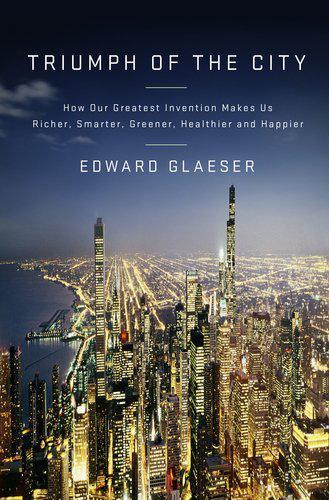
Triumph of the City: How Our Greatest Invention Makes Us Richer, Smarter, Greener, Healthier, and Happier
by
Edward L. Glaeser
Published 1 Jan 2011
Census Bureau, American Community Survey, 2008 Data Profile for City of Detroit, generated using American FactFinder; and Glaeser and Gyourko, “Urban Decline and Durable Housing.” 64 Spain has turned to transportation: Catan, “Spain’s Bullet Train.” 64 Liverpool had a flurry of new construction: “Liverpool, Capital Of Culture 2008: City on the up—It’s All in the Facades,” Guardian Magazine (London), Jan. 5, 2008. 64 The high-speed ... the rail connection: Catan, “Spain’s Bullet Train.” 65 Research has found ... just one job: Busso and Kline, “Do Local Economic Development Programs Work?” 65 from 1.4 million visitors in 1994 to 3.8 million in 2005: Plöger, “Bilbao City Report,” 30. 65 attracts a million visitors: “Guggenheim Bilbao Receives 5% Fewer Visits,” El Mundo, www.elmundo.es/elmundo/2009/01/12/cultura/1231778022.html. 66 nine hundred new jobs: Plaza, “Guggenheim Museum Bilbao,” 459. 66 cost the Basque treasury $240 million: Ibid., 461. 66 the National Centre ... closed the same year: “Debts Rock Pop Museum,” BBC News, Oct. 18, 1999, http://news.bbc.co.uk/2/hi/entertainment/478616.stm. 66 a total of 62,500 units: Plöger, “Leipzig City Report.” 66 lost more than half of its 1970 population: U.S.
…
Spain has turned to transportation, spending tens of billions of dollars on high-speed rail, partly as a way to boost economic growth in poorer areas. Other places, like Italy, have used large tax subsidies to encourage enterprise in poorer regions. Many European cities have tried cultural strategies like the Guggenheim Museum in Bilbao. In 2008, Liverpool had a flurry of new construction to celebrate its one-year stint as Europe’s capital of culture. Which of these strategies can actually reverse urban decline? Which strategies generate benefits that cover their costs? In the nineteenth century, when moving goods was enormously expensive, places with good transportation links, like New York or Liverpool, enjoyed a huge edge.
…
Why should the government effectively bribe people to live in declining areas? Why should growing areas be handicapped simply to keep people in older places? Moreover, investments in places don’t always benefit the people living there. How were the residents of Poletown helped when the city of Detroit helped General Motors evict them? Renters who lived near the Guggenheim Museum in Bilbao may well have been hurt by the art gallery, at least if they had little taste for contemporary art or architecture, because their rents rose significantly. The conflict between people and place got national attention in 2005 when Hurricane Katrina destroyed a great swath of New Orleans.

Messy: The Power of Disorder to Transform Our Lives
by
Tim Harford
Published 3 Oct 2016
The architect Frank Duffy, while admiring the daring of the project, comments, “Perhaps its gravest weakness is that it is a place where ‘play’ is enforced on everyone, all the time.”15 Jay Chiat saw himself as a revolutionary figure, a man chosen by destiny to tear down the conventions of office life. And, in some ways, his plans did prove visionary. Hiring Gehry showed impeccable taste; this was several years before the Guggenheim Bilbao would make Gehry the most famous architect on the planet. The bright colors, different architectural zones, clusters of couches interspersed with large tables, and use of mobile technology to free workers have all been widely copied. Chiat’s desire to make the office more like a university campus—“The idea is, you go to lectures, gather information, but you do your work wherever you like”—was also ahead of its time.
…
See also Oblique Strategies Enterobacter aerogenes, 209 Enterprises, network of, 27–28 Entrepreneurs, 2, 29, 52–53, 94–95 ER (TV show), 25 Erdős, Paul, 35–39, 57, 271n5 European Union, 163–64 Evans, Bill, 95, 96, 275n15 Evans, Gil, 275n15 Evolution, 27, 216 Facebook, 29, 55, 101, 256–57 Fallows, James, 134 Famous Five books (Blyton), 45 Faurie-Raymond hypothesis, 120 Federal Trade Commission, 137 Ferguson (Mo.), 55 Filing systems, 64, 67, 191, 235–38, 240 computer, 233, 236n, 239–40 Filo, David, 125 First World War, 117–18, 122 5S system of management (Sort, Straighten, Shine, Standardize, Sustain), 63–66, 68 Fleming, Alexander, 25 Flexible attention, 26 Flowers, Paul, 250–51 Forestry in the Federal Republic of Germany (Plochman), 205 Forests, 150–52, 155, 157, 205–7, 215–16 4'33" (Cage), 75 Fox News, 55 France, 61–62, 188–89, 232 in world wars, 117–18, 122, 128, 144 Franklin, Benjamin, 207, 231–33 Fraser, David, 134 Freedman, David, 236 Freud, Sigmund, 93 Friendship networks, 53–54 Frieser, Karl-Heinz, 128n Frost, Jeana, 248, 249, 256 Frugès, Henry, 61 Fry, Hannah, 246 Functional magnetic resonance imaging (fMRI), 99 Fury, Tyson, 120 Galápagos Islands, 27 Gaming the system, 159–63, 169–71, 174–75 Gandhi, Mohandas K., 93 Gariboldi, Italo, 129 Gawande, Atul, 153 Gehry, Frank, 70, 73, 80, 81 Genesis (band), 9 Geneva, 25 Germany, 1–5, 7–9, 20, 33, 174 forests in, 150–53, 205–7, 215, 216, 278n2 Nazi, 227–29, 259 in World Wars, 117–18, 122, 128–31, 135, 142, 143n, 145–48, 227 Gernsback, Hugo, 251 Gettysburg Address, 92 GI Bill, 75 Gigerenzer, Gerd, 165, 167n Gilead Sciences, 141 Gill, Tim, 262 Glasgow, 214 Golding, William, 45 Goldstein, Harvey, 158 Google, 24, 70, 80–82, 127, 139, 188–89, 191, 196 Gordimer, Nadine, 26 Gould, Stephen Jay, 26 GPS failures, 192–94, 196, 198 Granovetter, Mark, 36–37 Gray, Peter, 260 Gréco, Juliette, 97n Greece, 129, 163–64 Green, Lee, 166–67 Green, Nicola, 101–3 Greenberg, Andy, 187 Grindr, 244–45 Gruber, Howard, 27, 29 Guggenheim Bilbao, 70 Habit of yes, 105–7 Hackers, 75–78, 247–48 Haldane, Andy, 165–66, 170–73 Halle, Morris, 75, 76 Hankins, Victor, 187–88 Hannibal, 134 Hansa Studios (Berlin), 8 Harcourt, Bernard E., 224 Harrington, Brooke, 50–51, 58 Harris, T George, 85–86 Hartig, Georg, 206 Harvard Business Review, 141 Harvard University, 156, 243–44 Haslam, Alex, 65–68 Hastie, Reid, 46 Haworth, Guy, 121 Health care, 149–50, 152–55, 157–61, 166, 172, 173 Heart attacks, 154, 165–67, 169 Helicobacter pylori, 207–8 Herman Miller, Inc., 83 Heuristics, 165 Hidalgo, Cesar, 215–16 Hilbert, David, 226–27 Hirschberg, Julia, 238 Hitler, Adolf, 128, 129, 147–48, 227, 228 House, Simon, 9 How Buildings Learn (Brand), 79 Howard-Jones, Paul, 19 Human Error (Reason), 183 Humphrey, Laura, 241–42 Hunt-Davis, Ben, 33–35, 38, 39 Hunter-Tilney, Ludovic, 15 IBM Research, 240 Ibrahim, Rahinah, 189–90 Improvisation, 91–115, 253, 257, 264 in business, 127, 137, 143 creativity and, 1–4, 95–101, 105, 108–10 in military strategy, 119, 123, 128n, 129–30, 135, 139–40, 143–46 in public speaking, 94–95, 108–15 in workplace, 72, 75 Incentives.

Little Bets: How Breakthrough Ideas Emerge From Small Discoveries
by
Peter Sims
Published 18 Apr 2011
Pixar is as close to a constant learning organization as there is, with a proven ability to reinvent and a genuine cultural humility owing to Catmull’s prolonged and determined efforts to counter the natural human reactions to success by aspiring to proactively seek out and solve new problems constantly, recognizing that he doesn’t have all the answers. This is the growth mind-set in action. One of those I interviewed who impressed me most in exhibiting a growth mind-set was the architect Frank Gehry. Now in his eighties, Gehry is best known for the Guggenheim Museum in Bilbao, Spain, and Disney Concert Hall in Los Angeles. In 1989, he won the Pritzker Prize, a lifetime achievement award considered the Nobel Prize for architecture. So it was surprising when he said, “I don’t feel like I’m at the mountaintop. That’s the thing that’s really interesting. I don’t believe in it.
…
And in so doing, it’s important not only to dive deep into particular, selected environments, as Muhammad Yunus did, but also to go wide. CHAPTER 7 Learning a Little from a Lot Frank Gehry’s early designs were fairly conventional buildings, like shopping malls and suburban houses, a far cry from the stainless steel metallic exterior at the Guggenheim Museum in Bilbao or Disney Hall in Los Angeles. He discovered his unique style later in life, thanks in part to a handful of artists he got to know during the 1950s and 1960s. “The biggest influence on the design of my houses was Robert Rauschenberg,” Gehry says in Sketches with Frank Gehry. As a pioneer of abstract art known as Neo-Dadaist, Rauschenberg would use everyday objects that he’d find strewn on the streets of New York City in his art, things like pieces of crumpled newspaper, metal fans, or trash.
…
See Imposition of constraints Counterinsurgency methods, 27, 91–95, 103–105, 149–51, 155 Coyle, Daniel, The Talent Code, 163 Cranium, 156–58 Creativity, 7–13, 21, 51, 66, 87, 97, 107–109, 118, 121, 160–62, 197–98 further readings and resources on, 169–71 Csikszentmihalyi, Mihaly, 68, 87 Creativity: Flow and the Psychology of Discovery and Invention, 169 d.school, Stanford University, 12, 63, 134–35 Darden Graduate School of Business, University of Virginia, 10 Dean, Howard, 57 De Bono, Edward, Lateral Thinking: Creativity Step by Step, 169 Definition, 14 Dell, Michael, 110 Dell Computer, 110 Department of Defense (DoD), 86 Depression, 52 Design thinking, 12, 27–28 further readings and resources on, 171–72 Diffusion of ideas, 131–33 Digital animation, 29–32, 41–54, 59–62, 69–76, 105–106, 142–46, 148 Digital Project, 83 Disease, 9 Disney, 30, 32, 59, 60, 61, 75, 79, 146, 149, 159, 186–87 Disney, Lillian, 79 Disney, Walt, 79 Disney Concert Hall, Los Angeles, 77–83, 117 Diversity, 108, 117–30 Docter, Pete, 71–73, 75, 155 Doctrine approved solutions, 24–26 Donahoe, John, 120 Drucker, Peter, Innovation and Entrepreneurship, 167 Dweck, Carol, 36–41, 46–49, 116 Mindset: The New Psychology of Success, 163 Dyer, Jeffrey, 107, 108, 109–111, 114–15, 117–18 E.piphany, 102 Early adopters, 131–40, 146 eBay, 6, 19, 120 Economic crisis (2008), 153 Ecosystem, 136 Edison, Thomas, 7 Education, 14–15, 114–15, 160–61 Montessori, 115 Edwards, John, 125 Effort, 36–41 Eisner, Michael, 60–61 Elastic Compute Cloud (EC2), 7 Electronic Arts, 84 Electrosonic, 112, 113 Enron, 109 Entrepreneurship, 9–11, 28–29, 36, 89, 102–103, 148, 153–54 further readings and resources on, 172–73 See also specific entrepreneurs Evans & Sutherland, 44 Experimental innovation, 5, 7–17, 33, 35, 49, 65, 115, 158 conceptual innovation vs., 180–81 Extreme users, 133–34 Facebook, 57 Failing forward, 53 Failure, 13, 20–21, 25, 33, 35, 36, 90, 160 affordable loss principle, 28–33 growth mind-set and, 35–49 prototyping and, 52–64 Film, 29–32, 146 animated, 29–32, 41–45, 59–62, 69–76, 105–106, 142–46, 148–49, 150, 155, 158–59, 186–87 See also specific films Finding Nemo (film), 43, 52, 59, 60–62, 106, 159 Fixed mind-set, 36–49 Flexibility, 85, 142, 147, 151 Florida, Richard, 118 FM 5-0: The Operations Process, 28 fMRI imaging, 65–67 Ford, Henry, 15 Ford Motors, 25 Fried (Jason) and Hansson (David Heinemeier), Rework, 173 Fuji, 85 Further readings and resources, 163–78 Galenson, David, 7, 97–98, 180–81 Old Masters and Young Geniuses, 170, 180 Gates, Bill, 9 Gates Foundation, 9 Gehry, Frank, 13, 45–46, 51, 54–55, 65, 77–84, 87, 95, 117, 128, 153, 154, 158, 159, 161–62 imposition of constraints, 77–84 prototyping, 54–55, 63, 80, 81 General Electric, 21 General Motors, 15–16, 85 Georgescu, Peter, 12 Gergen, Christopher, 138 Life Entrepreneurs, 138 Germany, 24 Getzels, Jacob, 87 Gianforte (Greg) and Gibson (Marcus), Bootstrapping Your Business, 173 Gladwell, Malcolm, The Tipping Point, 133 Global market, 17 Global Open Innovation, 62 Google, 4–5, 7, 14, 35, 75, 78, 115, 156 Gordon, Bing, 84 Gore, Al, 125 GoTo.com, 4 Grameen Bank, 98, 102 Greene, Diane, 107 Greenspan, Alan, 153 Gregersen, Hal, 107, 108, 109–111, 114–15, 117–18 Growth mind-set, 35–49 Guerrilla warfare, 25–26 Guggenheim, Ralph, 145 Guggenheim Museum, Bilbao, 117 Gulf War (1991), 91 Hampes, William, 74 Hansson (David Heinemeier) and Fried (Jason), Rework, 173 Harvard Business Review, 6, 85, 107, 110 Harvard Business School, 107 Haskins, Casey, 22–26 HBO, 3 Heath, Chip, 138 Made to Stick, 138 Switch, 140 Hedge funds, 109 Hewlett, Bill, 9, 21–22, 28, 33, 120, 159 Hewlett-Packard, 9, 19–22, 28, 33, 88, 120, 159 Hickey, Chris, 104 Hill, Robert, 52 HiPPO, 75 Honda, 85 House, Chuck, 21, 33 Huber, Chet, 15–16 Humor, 73–76 stand-up comedy, 1–3, 12, 13, 32, 109, 128, 131, 133, 135, 140, 141, 151, 154–55 Ideas, diffusion of, 131–33 IDEO, 12, 63, 111 IEDs, 27 Illinois, 55–58 Immersion, 14, 97–116, 152 Imposition of constraints, 77–95, 193 architecture and, 77–84 military and, 91–95 software and, 83–91 Improvisation, 65–69 Incredibles, The (film), 42 India, 98–102 Inquisitiveness, 97–116 Insurgent warfare, 26–27, 91–95, 103–105, 149–51 Intangible factors, 20–21 Intelligence, and growth mind-set, 35–49 Internet, 4–7, 17, 57–58, 87, 89–91, 156 advertising, 4–5 Intuit, 91 Investment banking, 109 iPad, 132 Iraq War, 25–26, 27, 91–95, 103–105, 150 Iron Giant, The (film), 42 Iteration, 14 iTunes, 89 Jacoby, Ryan, 111 Jade, 112 Japan, 25, 85, 108 Jazz, 65–68 Jobs, Steve, 29, 30–32, 42, 43–44, 51, 62, 86, 107–108, 134, 135, 142–46, 148, 151 Johansson, Frans, The Medici Effect, 118, 173–74 Johns Hopkins University, 65 Johnson, Lyndon, 25 Jordan, Michael, 37, 47 Kahney, Leander, Inside Steve’s Brain, 107, 164 Kay, Alan, 31, 162 Kelley, David, 12, 63 Kelley, Tom, The Art of Innovation, 171–72 Kembel, George, 12 Kennedy, John F., 25 Khosla, Vinod, 10, 36 Kilduff, Daniel, 124, 125 Kill-and-capture strategy, 91 KLA Tencor, 19 Kleiner Perkins, 84 Klunkerz, The (documentary), 138 Kynikos Associates, 109 Lafley, A.
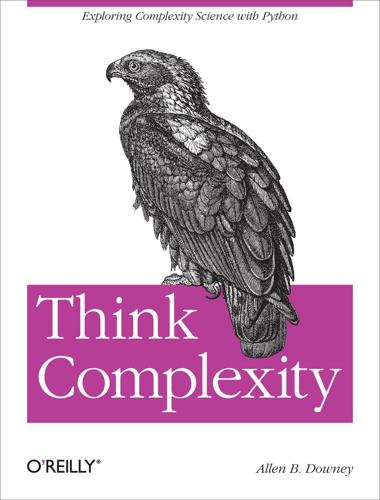
Think Complexity
by
Allen B. Downey
Published 23 Feb 2012
Analysis computation In classical engineering, the space of feasible designs is limited by our capability for analysis. For example, designing the Eiffel Tower was possible because Gustave Eiffel developed novel analytic techniques, in particular for dealing with wind load. Now tools for computer-aided design and analysis make it possible to build almost anything that can be imagined. Frank Gehry’s Guggenheim Museum Bilbao is my favorite example. Design search Engineering is sometimes described as a search for solutions in a landscape of possible designs. Increasingly, the search process can be automated. For example, genetic algorithms explore large design spaces and discover solutions human engineers would not imagine (or like).
…
regular graph, What’s a Graph? simple graph, What’s a Graph? undirected graph, What’s a Graph? GraphWorld, Representing Graphs grassroots, A New Kind of Engineering gravitation, A New Kind of Science Great Man theory, SOC, Causation, and Prediction grid, Game of Life, Percolation, Sand Piles Guggenheim Museum Bilbao, A New Kind of Engineering H Hacken, Wolfgang, The Axes of Scientific Models Haldane, J.B.S., Falsifiability half-life, What’s a Graph? harmonics, Spectral Density hash function, Hashtables HashMap, Hashtables hashtables, Hashtables Hertz, Spectral Density Hist, Zipf’s Law histograms, Cumulative Distributions hoisting, Spectral Density holism, A New Kind of Model holistic model, Reductionism and Holism, Reductionism and Holism Homo economicus, The Axes of Scientific Models homogeneous, The Axes of Scientific Models hop, Stanley Milgram hurricane, Realism, Instrumentalism I id, Instrumentalism immutable objects, Representing Graphs implementing cellular automata, Implementing CAs implementing Game of Life, Implementing Life in operator, Analysis of Search Algorithms incompleteness, A New Kind of Thinking Incompleteness Theorem, A New Kind of Thinking indeterminism, A New Kind of Thinking indexing, Analysis of Basic Python Operations, Fast Fourier Transform infinite loop, Generators infinite sequence, Iterators inheritance, Representing Graphs, Representing Graphs __init__, Representing Graphs instantiate, CADrawer instrumentalism, A New Kind of Model, Instrumentalism interactions, minimizing, A New Kind of Engineering interface, CADrawer, CADrawer implementing, CADrawer specifying, CADrawer IPython, Summing Lists isolation of components, A New Kind of Engineering __iter__, Iterators iterator, Iterators iteritems, List Comprehensions itertools, Iterators J join, Analysis of Basic Python Operations K Kansas, Stanley Milgram kernel, Implementing Life KeyError, Hashtables Kosko, Bart, A New Kind of Thinking Kuhn, Thomas, Paradigm Shift?
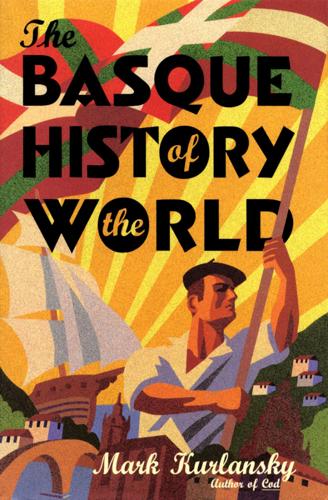
The Basque History of the World
by
Mark Kurlansky
Published 4 Jul 2010
THE OLD BRITISH freight docks, a huge riverfront operation in the heart of Bilbao that had serviced British industry for more than a century, was closed down in the post-Franco economic restructuring, but soon farmers on the slopes above the city saw a strange new sight below. The metal was whiter and fresher than anything else on the riverfront. And it had the name Guggenheim. How Bilbao ended up with a Guggenheim museum, paid for by Basque taxpayers, was a demonstration of the inner workings of the Basque Nationalist Party, the PNV. The project was a party dream, with nationalist motives that involved almost every imaginable calculation other than art. Josu Ortuando, mayor of Bilbao, said, “We were able to win out over Salzburg and other cities because city hall, parliament, and the Basque government could act as one.”

Cities Are Good for You: The Genius of the Metropolis
by
Leo Hollis
Published 31 Mar 2013
A site was then chosen that was once Spain’s leading steelyard, the centre for the ship-building industry that moved to Asia decades ago. In the end, the LA-based architect Frank Gehry was selected, and the result was less of a building, more of a glistening tumult of curves, metal and glass. The Guggenheim, Bilbao is the architectural equivalent of Marilyn Monroe singing ‘Happy Birthday’. Costing over $100 million to build, it was never a project for a faint-hearted municipality. In addition to the architectural auto-icon of the museum itself, the city was committed to provide transport – a new airport and subway – as well as improve sanitation and air quality to make the destination more attractive.
…
In 2010 visitor numbers continued to rise despite the economic downturn, reaching 954,000, at least 60 per cent of these coming from abroad and therefore adding a calculated €213 million to the region, €26 million tax revenue to the local government and offering employment to over 3,000 local workers.3 Bringing the Guggenheim to Bilbao was therefore one way of breathing new life into the city. The ‘Bilbao effect’ has been much copied but not often bettered. It heralded an era of superstar architects who were commissioned to build eye-catching cultural destinations that would put a once second- or third-tier city onto the map.
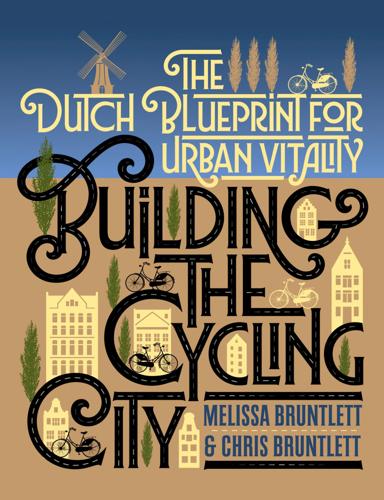
Building the Cycling City: The Dutch Blueprint for Urban Vitality
by
Melissa Bruntlett
and
Chris Bruntlett
Published 27 Aug 2018
“We can talk about cycling being red paint, and being deliberately shocking and creating icons and branding, but that’s all take-it-or-leave-it stuff,” he argues. “You could build anything to achieve that.” Fleming identifies the danger with iconic design is that “starchitects” can’t keep repeating the same trick. Frank Gehry can’t build a Guggenheim Bilbao in every city and have the same effect. “So the purpose of Velotopia was to say, ‘Hang on, there’s actually a practical benefit here and that’s to increase connectivity in the city.’” Fleming looks for a tipping point in every region—the point when they can no longer build their way to better motorized connections.
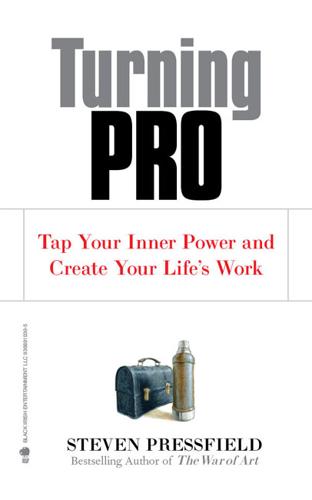
Turning Pro: Tap Your Inner Power and Create Your Life's Work
by
Steven Pressfield
Published 14 Aug 2011
We set our palms against the stones in the garden wall and search, search, search until at last, in the instant when we’re ready to give up, our fingers fasten upon the secret door. Like a child entering a meadow, we step over the threshold, forgetting everything except the butterfly that flits across our vision. From this play arises Guernica and The Godfather and the Guggenheim Museum Bilbao. A MARINE GETS TWO SALARIES There’s a well-known gunnery sergeant who, when his young Marines complain about their pay, explains that they get two salaries: A financial salary and a psychological salary. The Marine’s financial salary is indeed meager. But what about the psychological salary—the feeling of pride and honor, the sense of belonging to a brotherhood with a brave and noble history, and knowing that, no matter what happens, you remain a member of that fraternity as long as you live?
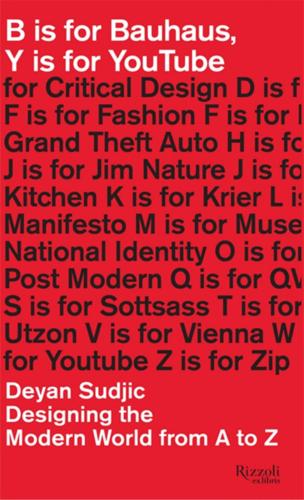
B Is for Bauhaus, Y Is for YouTube: Designing the Modern World From a to Z
by
Deyan Sudjic
Published 17 Feb 2015
In fact, Graves went so far as to suggest that he would rather practise law than build high-tech architecture. For a moment Graves was being described by Charles Jencks as the greatest American architect since Frank Lloyd Wright, and he acquired much the same aura that Frank Gehry attained a quarter of a century later when he completed the Guggenheim in Bilbao. Since then, Graves has declined into the construction of a sequence of exhibitionistic holiday resorts on a huge scale. There is a melancholy feel to looking at those ancient copies of Blueprint now. Why would anybody set out to start a new magazine once Amazon had sold more Kindle downloads than physical hardback books for the first time?
…
That has not stopped the growth of an Utzon cult in Australia and beyond; a cult which presents him as a wronged genius. It’s a cult that has played into the mania of the first years of the twenty-first century for icon building, one that has thankfully subsided somewhat from its peak at the creation of Frank Gehry’s Guggenheim building in Bilbao. Not uncoincidentally, Utzon was awarded the Pritzker Prize in 2003, a tribute from a jury that included Frank Gehry. And, perhaps equally revealingly, Utzon, who was born in Copenhagen and studied architecture at the city’s Royal Academy of Fine Arts, worked in the Helsinki office of Alvar Aalto, another champion of non-standard building types and curves.

The Deep Learning Revolution (The MIT Press)
by
Terrence J. Sejnowski
Published 27 Sep 2018
In an interview at the annual meeting of the Society for Neuroscience in 2006, Frank Gehry, the architect who designs buildings that look like ship’s sails (figure 5.8), was asked how he got ideas for his buildings.9 He replied that his inspiration came from looking at shapes of crumpled paper. But how does our visual system piece together the complex shape of the crumpled paper from the complex pattern of folds and shaded surfaces? 72 Chapter 5 How do we perceive the shifting shapes of the surfaces on the Guggenheim Museum in Bilbao (figure 5.8)? Steve Zucker recently was able to explain how we see folds in shaded images, based on the close relationship between the three-dimensional contours of the surface as seen on contour maps of mountains and the constant-intensity contours on images (figure 5.9).10 The link is provided by the geometry of surfaces.11 This explains the mystery of why our perception of shape is so insensitive to differences in the lighting and the surface properties of objects.
…
By looking at their projections to the output layer, which was trained to compute the curvature using a learning algorithm (discussed in chapter 8), we found that some of the hidden units were being used to decide between positive curvature (bulge) and negative curvature (bowl; figure 5.10). Like some simple cells, these units Figure 5.8 Guggenheim Museum in Bilbao, Spain, designed by Frank Gehry. Shading and reflections from curved surfaces give a strong impression of form and motion. Tiny people on the walkway calibrate the scale of the edifice. Insights from the Visual System 73 Figure 5.9 Altitude contours of a surface (top left) compared with isophotes (contours of constant intensity) of an image of the same surface (bottom left).
…
(Sejnowski’s wife), 44, 174, 203, 224, 269, 271 on the brain, 174 Ed Posner and, 44, 163 Francis Crick and, 269, 319n3 parallel distributed processing (PDP) and, 203 perceptron and, 44, 44f Sejnowski and, 161, 163, 269–270 Index SEXNET talk, 161 Stephen Wolfram and, 203 writings, 44f, 286n7, 291nn8–9, 313n2, 314n6 Golomb, Solomon “Sol” Wolf (Beatrice’s father), 220–224, 222f, 271, 273 Goodfellow, Ian, 135 Google, 20, 191, 205 deep learning and, ix, 7, 192 Geoffrey Hinton and, ix, 191, 273 PageRank algorithm, 311n4 self-driving cars, ix, 4, 6 TensorFlow and, 205–206 tensor processing unit (TPU), 7, 205 Google Assistant, 192 Google Brain, 191–192, 273 Google Translate, ix, 7, 8, 8f, 117, 191 Google X, 4 Gopnik, Alison, 317n10 Gould, Stephen Jay, 312n14 Gradient descent, 112 Grand Challenges for Science in the 21st Century conference, 195 Grandmother cell hypothesis, 235, 237 Grandmother cells, 235, 236f, 237–238 Graphics processing units (GPUs), 205 Graves, Alex, 259, 318n25 Gray, Michael S., 44f Greenspan, Ralph J., 316n21 Griffin, Donald R., 277 Groh, Jennifer M., 315n12 Gross, Charles G., 56, 64, 293n3 Grossberg, Stephen, 92, 297n5 Gross domestic intangibles (GDI), 193 Gross domestic product (GDP), 193 Guggenheim Museum Bilbao, 72, 72f Gutmann, Amy, 226f Halgren, Eric, 227, 228f, 314n12 Handwritten zip codes, learning to recognize, 104, 105f, 106 Hanson, David, 179f, 308n16 Hardy, Godfrey H., 223, 314n5 Index Harris, Kristen M., 121, 300n18 Hassabis, Demis, 19f, 20, 159, 288n36, 317n15 Hasson, Uri, 78, 295n18 Hawking, Stephen, 24, 125 Haykin, Simon, 154, 291n13, 305nn16–17 He, Kaiming, 129 Hebb, Donald O., 79, 101, 298n16, 313n11 Hebbian synaptic plasticity, 79, 95b, 101–102, 133, 213 Hecht-Nielsen, Robert, 118 Heeger, David J., 295n18 Helmholtz, Hermann von, 63, 225f, 314n10 Helmholtz Club, 63, 293n2 Hemingway, Ernest, 7–8 Herault, Jeanny, 81, 295n1 Hertz, John A., 94f Hidden target distribution, 241, 242f Hidden targets, 241 Hidden units (in neural networks), 103f, 113, 114f, 116, 119, 128, 132–133, 237–238 backprop networks with, 111b, 118, 148 in Boltzmann machine, 98b, 101, 102, 104, 106, 109 layers of, 47, 72, 74, 98b, 104, 106, 111b, 128, 153 perceptron and, 106, 109 simple cells compared with, 72, 74 Hillis, Danny, 229 Hinton, Geoffrey Everest, 91, 92, 96, 113, 117, 127–129, 271, 272 Boltzmann machine and, 49, 79, 104, 105f, 106, 110, 112, 127 Carnegie Mellon and, 60f, 117, 117f characterizations of, ix Charles Smith and, 61 computing with networks and, 273 David Rumelhart and, 109, 110, 112 329 deep learning and, 129f, 141f dropout technique and, 120 education, 50 George Boole and, 54 Google and, ix, 191, 273 neural networks and, 49, 165, 207 overview, 49–51 photographs, 50f, 60f, 117f, 129f positions held by, 51, 52, 61, 99, 127, 141, 191, 310n41 students, 24, 104, 128, 165 and the workings of the brain, 49–51 workshops, 1, 49, 50f, 52, 54, 60f, 109 writings, 1, 79, 97f, 100f, 103f, 105f, 112, 132f, 165, 286n13, 292n6, 297n12, 298n14, 298n20, 298n22, 299n4, 300nn14–15, 302n7, 303n17 Hippocampus (HC), 76f, 94, 101, 121, 236f Hit the opponent pieces, 148 HMAX, 128 Ho, Yu-Chi, 299n2 Hochreiter, Sepp, 134 Hodgkin, Alan, 32 Hoff, Ted, 39 Hofstadter, Douglas R., 224 Holland, John H., 312n15 Hollom, P.
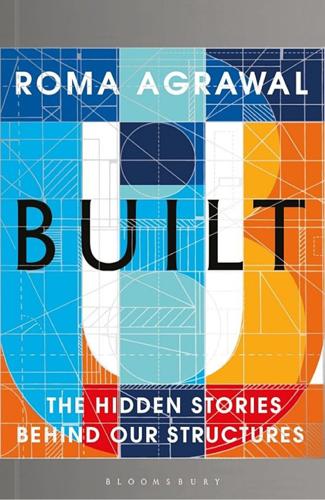
Built: The Hidden Stories Behind Our Structures
by
Roma Agrawal
Published 8 Feb 2018
Already, I can see certain trends in engineering – irregular geometry, technology such as robotics and 3D printing, a quest for more sustainability, the merging of different disciplines (such as in biomedical engineering), a mimicking of Nature – that will once again change the way our landscape looks and feels, and the ways in which we inhabit the planet. Even if some of these seem the stuff of science fiction at the moment. Computing capacity has made it possible for us to draw complicated, cambering shapes, such as the flowing surfaces of the Spanish Pavilion at 2010’s World Expo, the undulating Guggenheim Museum in Bilbao, and the Heydar Aliyev Center in Azerbaijan, which is as intricately shaped as a conch shell. This move towards the geometrically complex takes us away from the traditional square or rectangular building and towards more natural forms. At present, creating these shapes is still expensive because it involves curving steel and shaping it into bespoke contours, or building intricate moulds for concrete.
…
Romano; here courtesy of wikipedia; here © exaklaus-photos; here © Heritage Images; here © Heritage Images; here © Everett Collection Historical / Alamy Stock Photo; here © Fotosearch / Stinger; here © Stock Montage; here © Washington Imaging / Alamy Stock Photo; here © Popperfoto; here © North Wind Picture Archives / Alamy Stock Photo; here © Empato INDEX Page numbers in italic refer to the illustrations 3D printing here, here, here 9/11 here Abbey Mills Sewage Treatment Works, London here, here acanthus leaves here acceleration, of sway here Acropolis, Athens here Acton, London here, here Admiralty here adobe here aeroplanes here, here aggregates here, here air gaps, fire prevention here akasha here Akashi Kaikyo Bridge, Japan here Alexander the Great here Anatolia here, here Andronicus of Cyrrhus here Angel of Independence victory column, Mexico City here aqueducts here, here, here, here, here, here aquifers here, here Arabian Sea here arches aqueducts here, here, here Cattedrale di Santa Maria del Fiore, Florence here construction here, here corbelled arches here, here Derinkuyu here forces acting on here, here, here, here, here insulae here pointed arches here quadripartite arches here, here Roman here, here, here, here, here Archimedes here, here, here, here, here, here, here Arciniega, Claudio de here, here Aristotle here Armageddon (film) here Armstrong, Lord here Arnolfo di Cambio here Arthur, Chester here ash, volcanic here, here, here Assyria here Athens here Acropolis here Parthenon here Propylaea here ‘Tower of the Winds’ here, here atoms here Atrush, River here Attenborough, David here attenuation tanks, sewage here Augustus, Emperor here Avignon here Azerbaijan here Aztecs here, here, here, here, here, here Babylon here, here, here bacteria recycling waste water here, here ‘self-healing’ concrete here sewage treatment here baking here balance, cable-stayed bridges here balconies here Bank of China Tower, Hong Kong here Baroque architecture here basements, skyscrapers here, here Basilica Cistern, Istanbul here, here Basilica di Santa Croce, Florence here Batman Begins (film) here Battersea, London here Bazalgette, Joseph here, here, here, here, here beams here, here, here, here in ancient architecture here exoskeletons here flexing here, here, here, here shape here bearings cable-stayed bridges here earthquake protection here, here Beckton sewage treatment works, London here, here beehives here, here Beijing here Belgium here ‘the bends’ here Bénézet, Saint here Berbers here Bessemer, Anthony here Bessemer, Henry here, here Bessemer Process here, here, here Bilbao here biomimicry here, here, here birds here, here ‘Bird’s Nest’ National Stadium, Beijing here Black Sea here boats Falkirk Wheel here, here The Pontoon here, here, here sailing here Boeing aeroplanes here bolts, tie-systems here Bombay Stock Exchange here, here bombs here, here Bond, James here bonds, metals here bone, biomimicry here Bosque de Chapultepec, Mexico City here bouncy bridges here braces here bricks here, here arches here, here Cattedrale di Santa Maria del Fiore, Florence here, here concrete here Indus Valley Civilisation here Jericho here load-bearing structures here manufacture here mortar here, here Roman here, here, here tunnels here, here, here Victorian architecture here bridges here Akashi Kaikyo Bridge, Japan here Brooklyn Bridge, New York here, here, here, here, here cable-stayed bridges here, here, here, here construction here Falkirk Wheel here, here forces here Forth Bridge here foundations here, here, here, here Golden Gate Bridge, San Francisco here graphene here Ishibune Bridge here, here London Bridge here, here Millau Viaduct here, here movement joints here Northumbria University Footbridge, Newcastle here, here, here, here, here, here, here Old London Bridge here, here piers here, here Pont d’Avignon here The Pontoon here, here, here Quebec Bridge here, here, here reinforced concrete here resonance here, here, here Roman here rope bridges here silk bridge here, here span here steel here stress-ribbon bridges here, here suspension bridges here, here, here, here Sydney Harbour Bridge here, here, here and temperature here 3D printing here trusses here tuned mass dampers here, here Britain Beneath Your Feet (documentary) here British Association here British Empire here Bronze Age here Brooklyn Bridge, New York here, here, here, here, here Brooklyn Engineers’ Club here Brunel, Isambard here, here, here, here Brunel, Marc here, here, here, here Brunel, Mary here Brunel, Sophia here, here Brunelleschi, Filippo here, here, here, here, here, here burdock here Burj Khalifa, Dubai here, here, here Byzantine Empire here, here cables cable-stayed bridges here, here, here, here The Pontoon here stress-ribbon bridges here, here suspension bridges here, here, here caisson disease here, here caissons here, here, here, here calcite here calcium, in concrete here, here California here Caligula, Emperor here Callimachus here Cambridge Centre for Smart Infrastructure and Construction here Canada here canals aqueducts here Falkirk Wheel here, here Nineveh here locks here, here Singapore here cantilevers here carbon adding to iron here in steel here, here, here carbon dioxide, concrete-making here carbon fibres, elevators here cast iron here Castle of the Teutonic Order, Malbork here catenary curves here, here, here Cattedrale di Santa Maria del Fiore, Florence here, here, here, here causeways here caves, Derinkuyu here Celtic axes here, here cement here, here, here, here, here see also concrete centering here, here, here, here Centre Pompidou, Paris here, here, here, here ceramics here cesspits here Chatham Dockyard here, here Chicago here DeWitt-Chestnut apartment building here John Hancock Center here, here China here, here, here, here, here, here cholera epidemics here, here, here chuna mortar here Church here cisterns here, here clay in cement here clay mines here reinforcing tunnels with here tunnelling into here see also bricks cofferdams here, here, here collapses here, here columns here, here dis-proportionate collapse here after explosions here Old London Bridge here pontoon bridges here Quebec Bridge here, here resonance and here Ronan Point here, here, here, here, here, here Tacoma Narrows Bridge here Tay Bridge here World Trade Center New York here Colosseum, Rome here, here, here columns here, here, here, here Basilica Cistern, Istanbul here, here Corinthian columns here, here exoskeletons here failure here, here insulae here Pantheon, Rome here safety calculations here World Trade Center collapse here Commission of Sewers here compression here, here arches here, here, here, here beams here cable-stayed bridges here columns and here concrete here, here domes here, here load-bearing systems here skyscraper cores here suspension bridges here computer-aided design here concrete here aggregates here, here aqueducts here arches here beams here, here carbon dioxide emissions here columns here compression here, here cracking here, here, here curved shapes here domes here in fires here floors here, here, here making here moulds here Pantheon, Rome here, here, here, here piles here, here prefabrication here, here reinforced concrete here, here Roman here, here, here, here, here, here, here ‘self-healing’ concrete here in skyscrapers here, here, here, here, here, here, here sound proofing here steel reinforcement bars here strength here and tension here, here versatility here conduits, kariz (water system) here, here Constantine, Emperor here cooking here Cooper, Theodore here corbelled arches here, here core, skyscrapers here, here, here, here, here Corinth here Corinthian columns here, here Cornwall here Cow Court, Rotherhithe here cranes here, here, here, here, here, here Crassus, Marcus Licinius here Crimean War (1853–56) here Crossness Sewage Treatment Works, Erith, London here, here Crossrail, London here crows here Crystal Palace station, London here crystals, in metals here, here culverts here, here, here curved shapes here Czech Republic here dampers earthquake protection here, here tuned mass dampers here, here, here, here, here ultra-thin skyscrapers here Dardanelles here Darius I, King of Persia here Dark Ages here Darlington here Darwin’s bark spider here, here Delhi, Iron Pillar here, here, here, here Democritus here Derinkuyu here desalination plants here deserts, water systems here DeWitt-Chestnut apartment building, Chicago here Dhaka University here diagrids here, here disease here, here, here, here dis-proportionate collapse here diving bells here, here diving boards here, here domes Cattedrale di Santa Maria del Fiore, Florence here, here, here construction here forces acting on here, here Pantheon, Rome here, here, here, here, here Doric columns here drawbridges here Driver, Charles Henry here drones here Dubai, Burj Khalifa here, here, here ductility here, here earth four elements here see also soil earthquakes here, here, here, here East India Company here East London Railway Company here East River, New York here Eastgate Centre, Zimbabwe here Edge Moor Iron Company here Edinburgh here eggs here, here, here, here Egypt here, here, here, here, here Eiffel Tower, Paris here, here, here elasticity metals here spider silk here electricity cables here, here elements here elevators here, here, here, here, here, here embankments, rivers here Empire State Building, New York here, here end-bearing piles here, here energy earthquakes here making concrete here pulleys here Epicurus here epidemics here, here Erciyes here escalators here escape routes, skyscrapers here, here exoskeletons here, here, here, here, here, here, here exothermic reactions here explosions here, here, here, here external braced frames see exoskeletons Fa Hsien, A Record of Buddhistic Kingdoms here fairy chimneys here, here Falkirk here Falkirk Wheel here, here Ferris Wheels here fertilisers here, here fibre optic cables here filters, waste water here, here fires here, here concrete and here Great Fire of London here Great Fire of Rome here Old London Bridge here World Trade Center, New York here First World War here Fisac, Miguel here flexible membrane moulds here floating bridges here, here floods here, here, here floors here, here, here, here Florence Basilica di Santa Croce here Cattedrale di Santa Maria del Fiore here, here, here, here, here Palazzo Vecchio here Ponte Vecchio here forces in arches here, here and collapses here designing bridges here in domes here, here earthquakes here frame structures here, here gravity here, here load-bearing structures here, here piles here pulleys here wind here see also compression; tension formwork, concrete here Forth and Clyde Canal here Forth Bridge, Scotland here Forum, Rome here, here fossils here foundations here bridges here, here, here, here, here building on soft ground here, here insulae here on piles here Roman here, here tunnels here four elements here Four National Taps (Singapore) here frame structures here, here exoskeletons here, here, here, here, here, here, here parts of here tie-systems here France here, here, here Franchini, Gianfranco here Fratres Pontifices here frequency here, here fresh water here friction arches here, here piles here, here weight and here From Russia with Love (film) here furnaces here, here, here Gardon, River here, here Garuda here gas explosions here geometry, irregular here Georgetown Visitation Convent here, here Germany here, here, here ‘The Gherkin’, London here, here, here, here Giotto here, here Giza, Great Pyramid here, here Glasgow here glass here, here, here, here Goh Chok Tong here Golden Gate Bridge, San Francisco here Gonabad here Gothic architecture here grape skins here graphene here, here gravity here, here, here Great Fire of London (1666) here Great Fire of Rome (AD 64) here Great North Run here, here Great Pyramid of Giza here, here ‘Great Stink’, London (1858) here Great Wall of China here, here Greece here, here, here, here ‘ground granulated blast furnace slag’ (GGBS) here Guggenheim Museum, Bilbao here guns, Crimean War here Gupta dynasty here Gyllius, Petrus here gypsum here, here, here Hadrian, Emperor here Harappa here, here Harris, Andres here Hasan here Haughwout, E.V. & Co. here, here healing here Hearst Tower, Manhattan here, here Heartlands Project, Cornwall here Hellespont here, here Heraclitus of Ephesus here Herodotus, The Histories here herringbone pattern, brick-laying here, here Hewitt, Abram here Heydar Aliyev Center, Azerbaijan here Hiero II, King here Hinduism here, here Hittites here Hoare, Edward here Hodge, Ivy here, here Hong Kong here, here Hood Canal Bridge here Horologion of Andronikos Kyrrhestes, Athens here, here horse hair, reinforcing plaster here hot-working metal here, here House of Commons, London here houses frame structures here, here insulae (apartment buildings) here, here load-bearing structures here, here on Old London Bridge here Huitzilopochtli here huts, mud here, here, here hydration here, here hydraulics, earthquake protection here Iltutmish, tomb of, Delhi here Imperial College London here India here, here, here, here, here, here Indus Valley Civilisation here, here Industrial Revolution here Institute of Making here Institution of Structural Engineers here insulae (apartment buildings) here, here intumescent paint here Iran (Persia) here, here Iraq here, here iron here cast iron here frame structures here furnaces here Iron Pillar, Delhi here, here, here, here reinforced concrete here Roman here rust here strengthening here suspension bridges here wrought iron here see also steel Iron Age here iron oxide here irregular geometry here Ishibune Bridge, Japan here, here Islamic architecture here, here Israel here Istanbul, Basilica Cistern here, here Italy here, here, here jacks, tightening cables here Japan here, here, here, here Jeddah Tower here Jenga here Jericho here Jerwan here jibs, cranes here John Hancock Center, Chicago here, here Johor River here Jordan here Jordan, River here Justinian, Emperor here kariz (water system) here, here keystones, arches here, here Khan, Fazlur here, here, here kilns, brick here, here, here Kodumanal here Kuala Lumpur here, here, here Landesgartenschau Exhibition Hall, Stuttgart here lasers here lava, volcanic here, here Leaning Tower of Pisa here, here Lebanon here Lee Kuan Yew here Leeds University here LEGO here Leonardo da Vinci here, here Levant here lime here lime mortar here limestone here, here, here Lincoln Cathedral here Lincoln’s Inn, London here loads on arches here building on soft ground here load-bearing structures here, here patterned loading here piles here preventing collapses here World Trade Center collapse here, here, here locks, canals here, here Loki here London here, here Crossrail here Crystal Palace station here Great Fire here London Overground here New London Bridge here, here Old London Bridge here, here Ronan Point, Canning Town here, here, here, here, here, here 30 St Mary Axe (The Gherkin) here, here, here, here St Pancras Renaissance Hotel here sewers here, here, here, here The Shard here, here, here, here, here, here, here, here, here, here, here Tower of London here Tube here, here, here, here tunnels here, here, here Los Angeles here McLean, Thomas here McLure, Norman here Madagascar here Madrid here, here Malaysia here, here, here, here, here Malbork here Maltesers here Manhattan here, here, here, here maps, wind here Marathon, Battle of (490 BC) here Marmara here master builders here materials choice of here science of here see also concrete, steel etc mega-skyscrapers here, here Melendiz Daglari here membrane engineering here Menander here Mendeleev, Dmitri here Merdeka Tower, Kuala Lumpur here Mesopotamia here, here metal here bonds here ductility here elasticity here molecular structure here see also iron; steel Metropolitan Board of Works, London here Metropolitan Cathedral, Mexico City here, here, here Metropolitan Commission of Sewers, London here Mexico City here, here Angel of Independence victory column here Metropolitan Cathedral here, here, here Torre Latinoamericana here Torre Mayor skyscraper here, here mica here microfiltration here Middle Ages here Middle East here Millau Viaduct here, here Miller, Abraham here Milton Keynes here Milwaukee Art Museum here minarets here mines, clay here Miodownik, Mark here Mohenjo-daro here, here molecular structure, metal here Monier, Joseph here Moon here Morocco here mortars here, here, here, here moulds, for concrete here movement joints, bridges here mud mud huts here, here, here reinforcing with straw here multi-use buildings here Mumbai here, here, here MUPAG Rehabilitation Center, Madrid here muqanni here Murphy, Senator Henry here Murrow Memorial Bridge here mythology here, here Namazu here Napoleon Bonaparte here National Museum of Anthropology, Mexico City here National Taps, Singapore here Native Americans here Nature, biomimicry here, here, here navvies here Neolithic man here Nero, Emperor here, here New York here, here, here Brooklyn Bridge here, here, here, here, here Empire State Building here, here Hearst Tower here, here 432 Park Avenue here World Trade Center here, here New York Bridge Company here New York Herald here New York Star here New York World’s Fair (1853) here NEWater here Newcastle, Northumbria University Footbridge here, here, here, here, here, here, here Newton, Isaac here, here third law of motion here, here, here newtons here Niederfinow Boat Lift here night soil trade here Nightingale, Florence here Nineveh here Norse mythology here Northumbria University Footbridge, Newcastle here, here, here, here, here, here, here octopuses here oculus (opening) here, here, here, here Old London Bridge here, here opus caementicium here Osaka here osmosis here, here, here Otis, Elisha here, here, here, here, here, here Ottoman Empire here Ovando-Shelley Dr Efraín here, here Oxford University here oxidation here oxygen, Bessemer Process here paint, intumescent here Pakistan here Palazzo Vecchio, Florence here Palm Jumeirah, Dubai here Pantheon, Rome here, here, here, here, here parabolic cables here Paris here Centre Pompidou here, here, here, here Eiffel Tower here, here, here Paris Exposition (1867) here 432 Park Avenue, Manhattan here Parker, John here, here Parthenon, Athens here patterned loading here pendulums earthquake protection here, here, here, here Metropolitan Cathedral, Mexico City here, here penthouses here Percival, Lt-General Arthur here periodic table here Persia here, here Peter of Colechurch here Petronas Towers, Kuala Lumpur here, here Philadelphia here Phoenicians here phosphorus here, here Piano, Renzo here piers, bridges here, here piledrivers here, here piles here, here, here, here, here, here Pillar, Iron (Delhi) here, here, here, here pipes, robots checking here Pisa, Leaning Tower of here, here plaster here, here plaster of Paris here Plataea here, here Pliny the Elder, Historia Naturalis here Plutarch’s Lives here pneumatic caissons here polyethylene (PE) formwork here polypropylene (PP) formwork here polystyrene blocks, formwork here polyvinylidene fluoride here Pompeii here, here Pompidou Centre, Paris here, here, here, here Pont d’Avignon here Pont du Gard aqueduct here, here Ponte Vecchio, Florence here The Pontoon here, here, here potholes here pozzolana here, here Pratt trusses here prefabrication here, here prehistoric buildings here Propylaea, Athens here Public Utilities Board, Singapore here pulleys here, here, here, here, here pumping stations, sewers here, here Purnell, Phil here pyramids here, here, here, here, here, here qanat (water system) here Quadracci Pavilion, Milwaukee Art Museum here quadripartite arches here, here quartz here Quebec Bridge here, here, here Quebec City here Qutb complex, Delhi here, here Rael, Ronald here Raffles, Sir Stamford here raft foundations here, here railways here, here, here, here rainwater here, here, here, here recycling waste water here Regent’s Canal, London here reinforced concrete here, here Renaissance here, here Rennie, John here repairs, future possibilities here reservoirs here, here resonance here, here, here, here, here reverse osmosis here, here, here rice here Richard the Raker here rivers untreated sewage in here, here, here, here see also bridges road repairs here robots here, here, here rocks, formation of clay here Roebling, Emily Warren here, here, here, here, here, here, here Roebling, John Augustus here, here, here, here Roebling, Washington here, here, here Rogers, Richard here Romans here aqueducts here, here, here arches here, here, here, here, here Basilica Cistern, Istanbul here, here bricks here, here, here bridges here, here columns here concrete here, here, here, here, here, here, here cranes here, here, here fires here foundations here, here insulae (apartment buildings) here, here iron here on materials here mortars here ‘Tower of the Winds’, Athens here, here Rome here, here Colosseum here, here, here Forum here, here Pantheon here, here, here, here, here Ronan Point, Canning Town, London here, here, here, here, here, here rope bridges here, here ropes, pulleys here rotating bridges here, here Rotherhithe, London here rubber bands here, here rubber bearings here, here rust here, here safety, skyscrapers here, here sailing here Saint Lawrence River here, here 30 St Mary Axe, London (The Gherkin) here, here, here, here St Mary’s Church, Rotherhithe, London here St Mary’s Church, Stralsund here St Pancras Renaissance Hotel, London here Salamis, Battle of (480 BC) here salty water desalination plants here reverse osmosis here, here, here San Francisco here sand, tunnelling into here sanitation here, here, here, here Saudi Arabia here Scotland Falkirk Wheel here, here Forth Bridge here Tay Bridge collapse here Scott, George Gilbert here sea urchins here Second World War here, here, here, here sedimentary rocks here ‘self-healing’ concrete here Sennacherib, King here sewers here, here, here, here Shanghai here The Shard, London here, here, here, here, here, here, here, here, here, here, here Sheffield here Sherlock Holmes (film) here The Shield (tunnel-boring machine) here, here, here Shinto here ships see boats shipworms here, here, here shock absorbers, earthquake protection here silicates, in concrete here silicon here, here silk bridge here, here Singapore here skulls, birds here skyscrapers basements here, here Burj Khalifa, Dubai here, here, here concrete in here, here, here, here, here, here, here core here, here, here, here, here elevators here, here escape routes here, here exoskeletons here, here, here, here, here, here, here explosions in here, here fires here first skyscrapers here height here, here, here mega-skyscrapers here, here piles here prefabrication here, here The Shard, London here, here, here, here, here, here, here, here, here, here, here slenderness ratios here stability systems here, here steel in here, here substructure here sway here, here, here, here and winds here slenderness ratios, skyscrapers here Snow, Dr John here Soho, London here soils piles in here subsidence here under London here water table here Spain here Spanish Pavilion, World Expo (2010) here Sparta here Spartacus here spiders, silk bridge here, here springs, wagon here, here stability systems, skyscrapers here, here stairs here, here starlings (artificial islands) here, here steel here beams here, here, here, here Bessemer Process here, here bridges here columns here core of skyscraper here, here, here, here ductility here exoskeletons here, here in fires here, here, here frame structures here hot-working here, here piles here reinforcing concrete with here, here, here rust here thermal expansion here trusses here waste materials here Stewart, James here stone bridge-building here constructing arches here load-bearing structures here Stralsund here Strasbourg Cathedral here straw, reinforcing mud with here Strépy-Thieu boat lift here stress-ribbon bridges here, here struts here Stuttgart here subsidence here, here substructure piles here, here skyscrapers here suspension bridges here, here, here, here sway, skyscrapers here, here, here, here Sydney Harbour Bridge here, here, here Syria here, here Tacoma Narrows Bridge, Washington here Taipei 101 tower here, here, here, here Taiwan here Taj Mahal, Agra here Tamil Nadu here Tarn valley here Tay Bridge here Tebitu, River here temperature bridges and here reinforced concrete and here Tenochtitlan here, here tension here, here beams here brick structures here cable-stayed bridges here, here, here concrete and here, here domes here, here metals here reinforced concrete here, here skyscraper cores here stress-ribbon bridges here suspension bridges here Teotihuacan here Teredo navalis (shipworm) here termite mounds here, here Texcoco, Lake here, here Thales here Thames, River Bazalgette’s sewers here, here New London Bridge here, here Old London Bridge here, here sewage in here Thames Tideway Tunnel here, here, here Thames Tunnel Company here, here, here thermal coefficients, reinforced concrete here Thrace here, here Three Gorges Dam here tie-systems here timber see wood toilets here, here, here Tokugawa shogunate here Tokyo here, here top-down construction method here, here, here Tornado Tower, Doha here Torre Latinoamericana, Mexico City here Torre Mayor skyscraper, Mexico City here, here toughness, spider silk here Tower Hamlets, London here Tower of London here towers cable-stayed bridges here, here suspension bridges here, here ‘Tower of the Winds’, Athens here, here and winds here see also skyscrapers treadwheels here Treasury (UK) here trees here, here, here, here Trevithick, Richard here triangles, trusses here, here, here Triton here trusses here, here, here Tuas here Tube, London here, here, here, here tubular system, exoskeletons here tuff here tuned mass dampers here, here, here, here, here tuning forks here tunnels kariz (water system) here, here Thames Tideway Tunnel here, here, here Thames Tunnel here, here, here, here tunnel boring machines (TBMs) here, here Turkey here, here, here, here turtles here, here typhoons here UN-Habitat here underground railways here, here, here, here underground structures here underwater structures here, here Union Canal, Scotland here United States Supreme Court Building, Washington here University of California, Berkeley here Urban VIII, Pope here Utica here vaults, quadripartite here, here Vauxhall Bridge, London here, here Velcro here ventilation systems here, here, here, here Vertigo (film) here Vesuvius, Mount here, here vibrations bridges here earthquakes here frequency here Victorian architecture here Vierendeel trusses here Vishnu, Lord here Vitruvius Pollio, Marcus here, here De Architectura here, here, here, here, here volcanoes here wagon springs here, here walls, wattle and daub here Wapping, London here War Office (British) here Warren, Gouverneur K. here Warren trusses here waste disposal here, here, here, here water here aqueducts here, here, here aquifers here, here bridge foundations here, here, here canals here, here cisterns here, here cofferdams here, here concrete-making here, here desalination plants here floods here inJapan here kariz here, here in London here, here osmosis here, here, here rainwater here, here, here, here recycling here reservoirs here, here in Singapore here waste water here, here, here, here water pipes here, here water table here wattle and daub here Wayss, Gustav Adolf here webs, spiders’ here, here weight and friction here gravity and here pulleys here weirs here wells here, here Westminster, London here Wheel, Falkirk here, here Wikipedia here Willis, Bruce here wind here, here wind maps here wind tunnels here, here windlasses here, here, here windows, insulae here, here women engineers here, here, here wood bridges here centering here, here, here early houses here, here formwork here piles here, here, here shipworms here wattle and daub here Woolwich Dockyard here World Expo (2010) here World Health Organization here World Trade Center, New York here, here World’s Fair, New York (1853) here wrought iron here Wuhan Greenland Centre here Xerxes, King of Persia here, here Zimbabwe here A NOTE ON THE AUTHOR Roma Agrawal is a structural engineer who builds big.
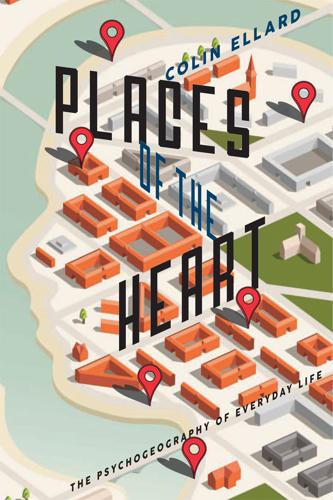
Places of the Heart: The Psychogeography of Everyday Life
by
Colin Ellard
Published 14 May 2015
Work by University of Toronto neuroscientist Oshin Vartanian has shown that exposure to curved or jagged contours in architectural interiors can change our patterns of brain activity.8 The presentation of curves produces strong activation in brain areas like the orbitofrontal cortex and cingulate cortex—areas of our brain that are associated with reward and pleasure. Jagged edges can cause increases in activity of the amygdala—an important part of our fear-detecting and response systems. In architectural terms, it may well have been the graceful curves of Frank Gehry’s Guggenheim Bilbao that reduced famed fellow architect Philip Johnson to tears when he first laid eyes upon the building. In contrast, the strong reactions elicited by Libeskind’s work in Toronto, notably similar to those brought about by architect I.M. Pei’s design for the new entryway to the Louvre, may have had their origin in patterns of brain responses related to our innate need to recognize fearsome environmental risks.
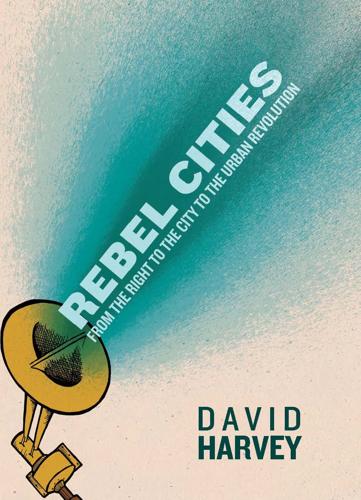
Rebel Cities: From the Right to the City to the Urban Revolution
by
David Harvey
Published 3 Apr 2012
It is no accident, of course, that it is Porto Alegre rather than Barcelona, Berlin, San Francisco, or Milan, that has opened itself to such opposi tional initiatives. 19 For in that city the forces of culture and of history are being mobilized by a political movement (led by the Brazilian Workers' Party) in a quite different way, seeking a different kind of collective sym bolic capital to that flaunted in the Guggenheim Museum in Bilbao or the extension to the Tate Gallery in London. The marks of distinction being accumulated in Porto Alegre derive from its struggle to fashion an alternative to globalization that does not trade on monopoly rents in par ticular or cave in to multinational capitalism in general. In focusing on popular mobilization, it is actively constructing new cultural forms and 1 12 REBEL CITIES new definitions of authenticity, originality, and tradition.
…
See also Beijing; Chongqing; Guangdong; Shanghai; Shenzen Chongqing, 64, 1 36 Christiania, Copenhagen, 78 City of God, 1 00 Class Struggles in France ( Marx) , 37 1 4 1 - 5 1 passim passim Elyachar, Jul ia, 20- 2 1 Engels, Friedrich, 4, 1 6- 1 8 passim, 5 3 Environmental Protection Agency (EPA), 1 60 Escobar, Arturo, 142 European Central Bank, 24 Cleveland, 1 3, 3 1 , 56, 83 European Union, 29 Clinton, Bill, 45, 53, 54, 56 Euskadi Ta Askatasuna ( ETA) , 1 00 Cochabamba, Bolivia, 82-83, 1 1 6, 142, Excluded Workers Congress, 1 3 1 -32, 143, 149 1 37, 1 5 1 Cold War, 9, 1 24 Columbia University, 23-24 Commonwealth ( Hardt and Negri), 1 52 The Comm unis t Manifesto (Marx and Engels), 53 Copenhagen, 78 Fallujah, Iraq, 1 1 7 Fannie Mae, 39, 4 1 , 45, 47, 49, 5 1 Federal Emergency Management Agency ( FEMA), 1 60 Federal Home Mortgage Corporation. See Freddie Mac I N D EX Federal National Mortgage Association. See Fannie Mae 1 83 Guggenheim Museum Bilbao, 1 04, Ill Federal Reserve Bank, 24-25, 45 Fletcher, Bill, 1 34-35, 1 40 Hamas, 1 1 7 Flint, Michigan, 1 32 Hamburg, 78, 1 3 6 Florida, 3 1 , 32, 45, 54, 58 Hanseatic League, 1 5 3 Foster, Norman, 1 04, 107 France, 31, 1 1 9, 1 3 1 , 149. See also Paris Hardin, Garrett, 68, 6 9 , 7 0 , 7 5 , 7 9 , 80, Freddie Mac, 39, 45, 5 1 French Communist Party, 1 35-36 Common wealth, 1 52 Harlem, New York City, 1 09 Gapasin, Fernando, 1 34-35, 140 Haussman, Georges- Eugene, 7- 1 2 1 73n2 Hardt, Michael, 36, 67, 72, 78, 1 46-47; Haug, Wolfgang, 93 Gaudi, Antoni, 1 04 passim, 1 6, 42, 1 1 7, 1 30 Gehry, Frank, 1 04 Hezbollah, 1 1 7 Genoa, 1 1 6 the High Line, New York City, 75 H itler, Adolf, 1 07 George, Hen ry, 1 70n4 Georgia, 3 1 Germany, 1 5, 3 1 , 57, 1 08, 1 70n8.

The Stack: On Software and Sovereignty
by
Benjamin H. Bratton
Published 19 Feb 2016
See also Sabrina Van Der Ley and Markus Richter, Megastructure Reloaded: Visionäre Stadtentwürfe Der Sechzigerjahre Reflektiert Von Zeitgenössischen Künstlern = Visionary Architecture and Urban Design of the Sixties Reflected by Contemporary Artists (Ostfildern: Hatje Cantz, 2008). 50. The Bilbao region in Spain experienced significant economic growth concurrent with the opening of the Frank Gehry designed Guggenheim Bilbao and opening in 1997. The “Bilbao effect” is a termed coined by Peter Eisenman to refer to the misguided hope of second-tier cites that adding some flashy new architectural icons would magically boost their city's brand and regional economy. 51. Perhaps a future Erich von Daniken will interpret Foster's structures as proof of alien intelligence on Earth's moon. 52.
…
See also interfaces architecture and, 165–166 computational intensification of, 171–172 effectiveness, 230 function of, 224–225, 229, 231, 297, 338–339 images of systemic interrelationality, 266 limitations, 226 normative essentiality of, 226 older, Apps versus, 168 ubiquity of, 249 User interfaces, 219–221, 223 Grasshopper, 320 Great Maginot Firewall, 112–113 green urbanism, 181–182 grids architectural expression of, 296 City layer, 149–153 to come, 294–295 descriptive and generative function, 150 Earth-wide, 37–38, 90–97, 149–153, 170, 180, 192, 229, 280, 294–296, 393n53 economy of motility, 38 freeways as, 280 lines of mobility forming channels, 38 smart, 92–96, 393n53 sovereignty of reversibility, 37 Stack interfacial systems as, 229 urban, 149–151, 160, 170, 178–179 volumetric, 37 Griffith, Saul, 258–261, 263, 268 Grossraum American, 31–32 Google, 34–35, 39, 134, 295, 318, 372 Schmittian, 31–32, 371 Grosz, Elizabeth, 84–85, 89, 288 ground is abstraction, 33 Groys, Boris, 41, 239–240, 425–427nn46–47 Guattari, Félix, 84, 158 Guggenheim Bilbao, 410n50 guns, 344–345 Habermas, Jürgen, 360 habit, 420n17 habitats, 237–239, 310, 424n41 habitus, 424n41 hacker-User distinction, 35 hacking cars, 283–284 war, 401n45 haecceities addressable, 212, 216, 264, 273, 279 mapping and linking, 296 hands the App transforming, 150, 238, 297 as interfaces, 222–223, 226, 236–239 Hansen, James, 98 Hansen, Mark, 265 Hansen, Robin, 317 Haque, Usman, 203, 392n40 Haraway, Donna, 385n25 HavenCo, 400n42 Hayek, Friedrich, 42, 328–329 Heatherwick, Thomas, 184 Hegel, Georg Wilhelm Friedrich, 55 Hegelian struggle, 397n19 Heidegger, Martin, 28–29, 131, 205, 304, 308, 421n19 Her (Jonze), 277 Hermes, 210 Hertz, Garnet, 275–276 Hertzian geography, 195 Herzog & de Meuron, 187, 311 High Rise (Ballard), 311 Himalayas, 97 Hirschman, Albert, 313 Hobbes, Thomas, 20, 328 Holmes, Brian, 418n43 “Holy War: Mac vs.
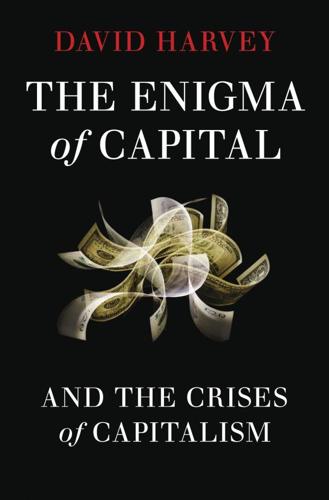
The Enigma of Capital: And the Crises of Capitalism
by
David Harvey
Published 1 Jan 2010
The selling and branding of place, and the burnishing of the image of a place (including states), becomes integral to how capitalist competition works. The production of geographical difference, building upon those given by history, culture and so-called natural advantages, is internalised within the reproduction of capitalism. Bring a signature architect to town and create something like Frank Gehry’s Guggenheim Museum in Bilbao. This helps put that city on the map of attractors for mobile capital. If geographical differences between territories and states did not exist, then they would be created by both differential investment strategies and the quest for spatial monopoly power given by uniqueness of location and of environmental and cultural qualities.
…
.: The World is Flat 132 futures, energy 24 futures markets 21 Certificates of Deposit 262 currency 24 Eurodollars 262 Treasury instruments 262 G G7/G8/G20 51, 200 Galileo Galilei 89 Gates, Bill 98, 173, 221 Gates foundation 44 gays, and colonisation of urban neighbourhoods 247, 248 GDP growth (1950–2030) 27 Gehry, Frank 203 Geithner, Tim 11 gender issues 104, 151 General Motors 5 General Motors Acceptance Corporation 23 genetic engineering 84, 98 genetic modification 186 genetically modified organisms (GMOs) 186 gentrification 131, 256, 257 geographical determinism 210 geopolitics 209, 210, 213, 256 Germany acceptance of state interventions 199–200 cross-border leasing 142–3 an export-dominated economy 6 falling exports 141 invasion of US auto market 15 Nazi expansionism 209 neoliberal orthodoxies 141 Turkish immigrants 14 Weimar inflation 141 Glass-Steagall act (1933) 20 Global Crossing 100 global warming 73, 77, 121, 122, 187 globalisation 157 Glyn, Andrew et al: ‘British Capitalism, Workers and the Profits Squeeze’ 65 Goethe, Johann Wolfgang von 156 gold reserves 108, 112, 116 Goldman Sachs 5, 11, 20, 163, 173, 219 Google Earth 156 Gould, Stephen Jay 98, 130 governance 151, 197, 198, 199, 201, 208, 220 governmentality 134 GPS systems 156 Gramsci, Antonio 257 Grandin, Greg: Fordlandia 188, 189 grassroots organisations (GROS) 254 Great Depression (1920s) 46, 170 ‘Great Leap Forward’ 137, 138, 250 ‘Great Society’ anti-poverty programmes 32 Greater London Council 197 Greece sovereign debt 222 student unrest in 38 ‘green communes’ 130 Green Party (Germany) 256 ‘green revolution’ 185–6 Greenspan, Alan 44 Greider, William: Secrets of the Temple 54 growth balanced 71 compound 27, 28, 48, 50, 54, 70, 75, 78, 86 economic 70–71, 83, 138 negative 6 stop in 45 Guggenheim Museu, Bilbao 203 Gulf States collapse of oil-revenue based building boom 38 oil production 6 surplus petrodollars 19, 28 Gulf wars 210 gun trade 44 H habitat loss 74, 251 Haiti, and remittances 38 Hanseatic League 163 Harrison, John 91 Harrod, Roy 70–71 Harvey, David: A Brief History of Neoliberalism 130 Harvey, William vii Haushofer, Karl 209 Haussmann, Baron 49, 167–8, 169, 171, 176 Hawken, Paul: Blessed Unrest 133 Hayek, Friedrich 233 health care 28–9, 59, 63, 220, 221, 224 reneging on obligations 49 Health Care Bill 220 hedge funds 8, 21, 49, 261 managers 44 hedging 24, 36 Hegel, Georg Wilhelm Friedrich 133 hegemony 35–6, 212, 213, 216 Heidegger, Martin 234 Helú, Carlos Slim 29 heterogeneity 214 Hitler, Adolf 141 HIV/AIDS pandemic 1 Holloway, John: Change the World without Taking Power 133 homogeneity 214 Hong Kong excessive urban development 8 rise of (1970s) 35 sweatshops 16 horizontal networking 254 household debt 17 housing 146–7, 149, 150, 221, 224 asset value crisis 1, 174 foreclosure crises 1–2, 166 mortgage finance 170 values 1–2 HSBC 20, 163 Hubbert, M.

Spain
by
Lonely Planet Publications
and
Damien Simonis
Published 14 May 1997
At all offices ask for the free bimonthly Bilbao Guía, with its entertainment listings plus tips on restaurants, bars and nightlife. There is also a call centre (944 71 03 01; 8.30am-11pm), which is on duty everyday and is equally helpful. Sights MUSEO GUGGENHEIM Opened in September 1997, Bilbao’s Museo Guggenheim (944 35 90 80; www.guggenheim-bilbao.es; Avenida Abandoibarra 2; adult/under 12yr/student €12.50/free/7.50; 10am-8pm daily Jul & Aug, 10am-8pm Tue-Sun Sep-Jun) lifted modern architecture and Bilbao into the 21st century – with sensation. It boosted the city’s already inspired regeneration and stimulated further development. * * * TRAVEL PASSES The Bilbacard (1-/2-/3-day pass €6/10/12) entitles the user to reduced rates on all city transport as well as reductions at many of the sights.
…
Sign-language tours take place at 12.30pm on the last Sunday of each month. Excellent self-guided audio tours in various languages are free with admission. Entry queues can be horrendous, with wet summer days and Easter almost guaranteeing you a wait of over an hour. The museum is wheelchair accessible. MUSEO DE BELLAS ARTES A mere five minutes from Museo Guggenheim is Bilbao’s Museo de Bellas Artes (Fine Arts Museum; 944 39 60 60; www.museobilbao.com; Plaza del Museo 2; adult/student €5.50/4, admission free Wed; 10am-8pm Tue-Sun). More than just a complement to the Guggenheim, it often seems to actually exceed its more famous cousin for content. The museum houses a compelling collection that includes everything from Gothic sculptures to 20th-century pop art.
…
The big thing, the most important change, is that the harbour and the big factories have left the main area of the city and moved to the suburbs, disappeared or been converted. It was a radical change, but more for the landscape than the mentality of the people. What do you like least about Bilbao? For me, it is a little bit sad to see all the foreigners coming to Bilbao only for the Guggenheim. Bilbao is not a tourist destination, at least not a classic one. Bilbao is a personal destination. What is your favourite restaurant in Bilbao? Don’t like restaurants too much. I prefer to eat a bocadillo (filled roll) overlooking the ría. But if I do go to one, I go to the Rio-Oja (Click here) in the Casco Viejo.
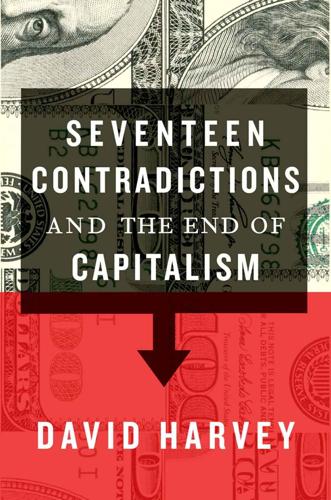
Seventeen Contradictions and the End of Capitalism
by
David Harvey
Published 3 Apr 2014
Cities like Barcelona, Istanbul, New York and Melbourne get branded, for example, as tourist destinations or as hubs for business activities by virtue of their unique characteristics and special cultural qualities. If there are no particularly unique features to hand, then hire some famous architect, like Frank Gehry, to build a signature building (like the Guggenheim Museum in Bilbao) to fill the gap.6 History, culture, uniqueness and authenticity are everywhere commodified and sold to tourists, prospective entrepreneurs and corporate heads alike, yielding monopoly rents to landed interests, property developers and speculators. The role of the class monopoly rent that is then gained from rising land values and property prices in cities like New York, Hong Kong, Shanghai, London and Barcelona is hugely important for capital in general.
…
N., Process and Reality, New York, Free Press, 1969 Wolff, R., Moore, B., and Marcuse, H., A Critique of Pure Tolerance: Beyond Tolerance, Tolerance and the Scientific Outlook, Repressive Tolerance, Boston, Beacon Press, 1969 Wright, M., Disposable Women and Other Myths of Global Capitalism, New York, Routledge, 2006 Index Numbers in italics indicate Figures. 2001: A Space Odyssey (film) 271 A Abu Ghraib, Iraq 202 acid deposition 255, 256 advertising 50, 121, 140, 141, 187, 197, 236, 237, 275, 276 Aeschylus 291 Afghanistan 202, 290 Africa and global financial crisis 170 growth 232 indigenous population and property rights 39 labour 107, 108, 174 ‘land grabs’ 39, 58, 77, 252 population growth 230 Agamben, Giorgio 283–4 agglomeration 149, 150 economies 149 aggregate demand 20, 80, 81, 104, 173 aggregate effective demand 235 agribusiness 95, 133, 136, 206, 247, 258 agriculture ix, 39, 61, 104, 113, 117, 148, 229, 239, 257–8, 261 Alabama 148 Algerian War (1954–62) 288, 290 alienation 57, 69, 125, 126, 128, 129, 130, 198, 213, 214, 215, 263, 266–70, 272, 275–6, 279–80, 281, 286, 287 Allende, Salvador 201 Althusser, Louis 286 Amazon 131, 132 Americas colonisation of 229 indigenous populations 283 Amnesty International 202 anti-capitalist movements 11, 14, 65, 110, 111, 162 anti-capitalist struggle 14, 110, 145, 193, 269, 294 anti-globalisation 125 anti-terrorism xiii apartheid 169, 202, 203 Apple 84, 123, 131 apprenticeships 117 Arab Spring movement 280 Arbenz, Jacobo 201 Argentina 59, 107, 152, 160, 232 Aristotelianism 283, 289 Aristotle 1, 4, 200, 215 arms races 93 arms traffickers 54 Arrighi, Giovanni 136 Adam Smith in Beijing 142 Arthur, Brian: The Nature of Technology 89, 95–9, 101–4, 110 artificial intelligence xii, 104, 108, 120, 139, 188, 208, 295 Asia ‘land grabs’ 58 urbanisation 254 assembly lines 119 asset values and the credit system 83 defined 240 devalued 257 housing market 19, 20, 21, 58, 133 and predatory lending 133 property 76 recovery of 234 speculation 83, 101, 179 associationism 281 AT&T 131 austerity xi, 84, 177, 191, 223 Australia 152 autodidacts 183 automation xii, 103, 105, 106, 108, 138, 208, 215, 295 B Babbage, Charles 119 Bangkok riots, Thailand (1968) x Bangladesh dismantlement of old ships 250 factories 129, 174, 292 industrialisation 123 labour 108, 123, 129 protests against unsafe labour conditions 280 textile mill tragedies 249 Bank of England 45, 46 banking bonuses 164 electronic 92, 100, 277 excessive charges 84 interbank lending 233 and monopoly power 143 national banks supplant local banking in Britain and France 158 net transfers between banks 28 power of bankers 75 private banks 233 profits 54 regional banks 158 shell games 54–5 systematic banking malfeasance 54, 61 Baran, Paul and Sweezy, Paul: Monopoly Capitalism 136 Barcelona 141, 160 barrios pobres ix barter 24, 25, 29 Battersea Power Station, London 255 Battle of Algiers, The (film) 288 Bavaria, Germany 143, 150 Becker, Gary 186 Bernanke, Ben 47 Bhutan 171 billionaires xi, 165, 169, 170 biodiversity 246, 254, 255, 260 biofuels 3 biomedical engineering xii Birmingham 149 Bitcoin 36, 109 Black Panthers 291 Blade Runner (film) 271 Blankfein, Lloyd 239–40 Bohr, Niels 70 Bolivia 257, 260, 284 bondholders xii, 32, 51, 152, 158, 223, 240, 244, 245 bonuses 54, 77, 164, 178 Bourdieu, Pierre 186, 187 bourgeois morality 195 bourgeois reformism 167, 211 ‘Brady Bonds’ 240 Braudel, Fernand 193 Braverman, Harry: Labor and Monopoly Capital 119 Brazil a BRIC country 170, 228 coffee growers 257 poverty grants 107 unrest in (2013) 171, 243, 293 Brecht, Bertolt 265, 293 Bretton Woods (1944) 46 brewing trade 138 BRIC countries 10, 170, 174, 228 Britain alliance between state and London merchant capitalists 44–5 banking 158 enclosure movement 58 lends to United States (nineteenth century) 153 suppression of Mau Mau 291 surpluses of capital and labour sent to colonies 152–3 welfare state 165 see also United Kingdom British Empire 115, 174 British Museum Library, London 4 British Petroleum (BP) 61, 128 Buffett, Peter 211–12, 245, 283, 285 Buffett, Warren 211 bureaucracy 121–2, 165, 203, 251 Bush, George, Jr 201, 202 C Cabet, Étienne 183 Cabral, Amilcar 291 cadastral mapping 41 Cadbury 18 Cairo uprising (2011) 99 Calhoun, Craig 178 California 29, 196, 254 Canada 152 Cape Canaveral, Florida 196 capital abolition of monopolisable skills 119–20 aim of 92, 96–7, 232 alternatives to 36, 69, 89, 162 annihilation of space through time 138, 147, 178 capital-labour contradiction 65, 66, 68–9 and capitalism 7, 57, 68, 115, 166, 218 centralisation of 135, 142 circulation of 5, 7, 8, 53, 63, 67, 73, 74, 75, 79, 88, 99, 147, 168, 172, 177, 234, 247, 251, 276 commodity 74, 81 control over labour 102–3, 116–17, 166, 171–2, 274, 291–2 creation of 57 cultural 186 destruction of 154, 196, 233–4 and division of labour 112 economic engine of 8, 10, 97, 168, 172, 200, 253, 265, 268 evolution of 54, 151, 171, 270 exploitation by 156, 195 fictitious 32–3, 34, 76, 101, 110–11, 239–42 fixed 75–8, 155, 234 importance of uneven geographical development to 161 inequality foundational for 171–2 investment in fixed capital 75 innovations 4 legal-illegal duality 72 limitless growth of 37 new form of 4, 14 parasitic forms of 245 power of xii, 36, 47 private capital accumulation 23 privatisation of 61 process-thing duality 70–78 profitability of 184, 191–2 purpose of 92 realisation of 88, 173, 192, 212, 231, 235, 242, 268, 273 relation to nature 246–63 reproduction of 4, 47, 55, 63, 64, 88, 97, 108, 130, 146, 161, 168, 171, 172, 180, 181, 182, 189, 194, 219, 233, 252 spatiality of 99 and surplus value 63 surpluses of 151, 152, 153 temporality of 99 tension between fixed and circulating capital 75–8, 88, 89 turnover time of 73, 99, 147 and wage rates 173 capital accumulation, exponential growth of 229 capital gains 85, 179 capital accumulation 7, 8, 75, 76, 78, 102, 149, 151–5, 159, 172, 173, 179, 192, 209, 223, 228–32, 238, 241, 243, 244, 247, 273, 274, 276 basic architecture for 88 and capital’s aim 92, 96 collapse of 106 compound rate of 228–9 and the credit system 83 and democratisation 43 and demographic growth 231 and household consumerism 192 and lack of aggregate effective demand in the market 81 and the land market 59 and Marx 5 maximising 98 models of 53 in a new territories 152–3 perpetual 92, 110, 146, 162, 233, 265 private 23 promotion of 34 and the property market 50 recent problems of 10 and the state 48 capitalism ailing 58 an alternative to 36 and capital 7, 57, 68, 115, 166, 218 city landscape of 160 consumerist 197 contagious predatory lawlessness within 109 crises essential to its reproduction ix; defined 7 and demand-side management 85 and democracy 43 disaster 254–5, 255 economic engine of xiii, 7–8, 11, 110, 220, 221, 252, 279 evolution of 218 geographical landscape of 146, 159 global xi–xii, 108, 124 history of 7 ‘knowledge-based’ xii, 238 and money power 33 and a moneyless economy 36 neoliberal 266 political economy of xiv; and private property rights 41 and racialisation 8 reproduction of ix; revivified xi; vulture 162 capitalist markets 33, 53 capitalo-centric studies 10 car industry 121, 138, 148, 158, 188 carbon trading 235, 250 Caribbean migrants 115 Cartesian thinking 247 Cato Institute 143 Central America 136 central banks/bankers xi–xii, 37, 45, 46, 48, 51, 109, 142, 156, 161, 173, 233, 245 centralisation 135, 142, 144, 145, 146, 149, 150, 219 Césaire, Aimé 291 CFCs (chloro-fluorocarbons) 248, 254, 256, 259 chambers of commerce 168 Chandler, Alfred 141 Chaplin, Charlie 103 Charles I, King 199 Chartism 184 Chávez, Hugo 123, 201 cheating 57, 61, 63 Cheney, Dick 289 Chicago riots (1968) x chicanery 60, 72 children 174 exploitation of 195 raising 188, 190 trading of 26 violence and abuse of 193 Chile 136, 194, 280 coup of 1973 165, 201 China air quality 250, 258 becomes dynamic centre of a global capitalism 124 a BRIC country 170, 228 capital in (after 2000) 154 class struggles 233 and competition 150, 161 consumerism 194–5, 236 decentralisation 49 dirigiste governmentality 48 dismantlement of old ships 250 dispossessions in 58 education 184, 187 factories 123, 129, 174, 182 famine in 124–5 ‘great leap forward’ 125 growth of 170, 227, 232 income inequalities 169 industrialisation 232 Keynesian demand-side and debt-financed expansion xi; labour 80, 82, 107, 108, 123, 174, 230 life expectancy 259 personal debt 194 remittances 175 special economic zones 41, 144 speculative booms and bubbles in housing markets 21 suburbanisation 253 and technology 101 toxic batteries 249–50 unstable lurches forward 10 urban and infrastructural projects 151 urbanisation 232 Chinese Communist Party 108, 142 Church, the 185, 189, 199 circular cumulative causation 150 CitiBank 61 citizenship rights 168 civil rights 202, 205 class affluent classes 205 alliances 143, 149 class analysis xiii; conflict 85, 159 domination 91, 110 plutocratic capitalist xiii; power 55, 61, 88, 89, 92, 97, 99, 110, 134, 135, 221, 279 and race 166, 291 rule 91 structure 91 class struggle 34, 54, 67, 68, 85, 99, 103, 110, 116, 120, 135, 159, 172, 175, 183, 214, 233 climate change 4, 253–6, 259 Clinton, President Bill 176 Cloud Atlas (film) 271 CNN 285 coal 3, 255 coercion x, 41–4, 53, 60–63, 79, 95, 201, 286 Cold War 153, 165 collateralised debt obligations (CDOs) 78 Collins, Suzanne: The Hunger Games 264 Colombia 280 colonialism 257 the colonised 289–90 indigenous populations 39, 40 liberation from colonial rule 202 philanthropic 208, 285 colonisation 229, 262 ‘combinatorial evolution’ 96, 102, 104, 146, 147, 248 commercialisation 262, 263, 266 commodification 24, 55, 57, 59–63, 88, 115, 140, 141, 192, 193, 235, 243, 251, 253, 260, 262, 263, 273 commodities advertising 275 asking price 31 and barter 24 commodity exchange 39, 64 compared with products 25–6 defective or dangerous 72 definition 39 devaluation of 234 exchange value 15, 25 falling costs of 117 importance of workers as buyers 80–81 international trade in 256 labour power as a commodity 62 low-value 29 mobility of 147–8 obsolescence 236 single metric of value 24 unique 140–41 use value 15, 26, 35 commodity markets 49 ‘common capital of the class’ 142, 143 common wealth created by social labour 53 private appropriation of 53, 54, 55, 61, 88, 89 reproduction of 61 use values 53 commons collective management of 50 crucial 295 enclosure of 41, 235 natural 250 privatised 250 communications 99, 147, 148, 177 communism 196 collapse of (1989) xii, 165 communist parties 136 during Cold War 165 scientific 269 socialism/communism 91, 269 comparative advantage 122 competition and alienated workers 125 avoiding 31 between capitals 172 between energy and food production 3 decentralised 145 and deflationary crisis (1930s) 136 foreign 148, 155 geopolitical 219 inter-capitalist 110 international 154, 175 interstate 110 interterritorial 219 in labour market 116 and monopoly 131–45, 146, 218 and technology 92–3 and turnover time of capital 73, 99 and wages 135 competitive advantage 73, 93, 96, 112, 161 competitive market 131, 132 competitiveness 184 complementarity principle of 70 compounding growth 37, 49, 222, 227, 228, 233, 234, 235, 243, 244 perpetual 222–45, 296 computerisation 100, 120, 222 computers 92, 100, 105, 119 hardware 92, 101 organisational forms 92, 93, 99, 101 programming 120 software 92, 99, 101, 115, 116 conscience laundering 211, 245, 284, 286 Conscious Capitalism 284 constitutional rights 58 constitutionality 60, 61 constitutions progressive 284 and social bond between human rights and private property 40 US Constitution 284 and usurpation of power 45 consumerism 89, 106, 160, 192–5, 197, 198, 236, 274–7 containerisation 138, 148, 158 contracts 71, 72, 93, 207 contradictions Aristotelian conception of 4 between money and the social labour money represents 83 between reality and appearance 4–6 between use and exchange value 83 of capital and capitalism 68 contagious intensification of 14 creative use of 3 dialectical conception of 4 differing reactions to 2–3 and general crises 14 and innovation 3 moved around rather than resolved 3–4 multiple 33, 42 resolution of 3, 4 two modes of usage 1–2 unstable 89 Controller of the Currency 120 corporations and common wealth 54 corporate management 98–9 power of 57–8, 136 and private property 39–40 ‘visible hand’ 141–2 corruption 53, 197, 266 cosmopolitanism 285 cost of living 164, 175 credit cards 67, 133, 277 credit card companies 54, 84, 278 credit financing 152 credit system 83, 92, 101, 111, 239 crises changes in mental conceptions of the world ix-x; crisis of capital 4 defined 4 essential to the reproduction of capitalism ix; general crisis ensuing from contagions 14 housing markets crisis (2007–9) 18, 20, 22 reconfiguration of physical landscapes ix; slow resolution of x; sovereign debt crisis (after 2012) 37 currency markets, turbulence of (late 1960s) x customary rights 41, 59, 198 D Davos conferences 169 DDT 259 Debord, Guy: The Society of the Spectacle 236 debt creation 236 debt encumbrancy 212 debt peonage 62, 212 decentralisation 49, 142, 143, 144, 146, 148, 219, 281, 295 Declaration of Independence (US) 284 decolonisation 282, 288, 290 decommodification 85 deindustrialisation xii, 77–8, 98, 110, 148, 153, 159, 234 DeLong, Bradford 228 demand management 81, 82, 106, 176 demand-side management 85 democracy 47, 215 bourgeois 43, 49 governance within capitalism 43 social 190 totalitarian 220, 292 democratic governance 220, 266 democratisation 43 Deng Xiaoping x depressions 49, 227 1930s x, 108, 136, 169, 227, 232, 234 Descartes, René 247 Detroit 77, 136, 138, 148, 150, 152, 155, 159, 160 devaluation 153, 155, 162 of capital 233 of commodities 234 crises 150–51, 152, 154 localised 154 regional 154 developing countries 16, 240 Dhaka, Bangladesh 77 dialectics 70 Dickens, Charles 126, 169 Bleak House 226 Dombey and Son 184 digital revolution 144 disabled, the 202 see also handicapped discrimination 7, 8, 68, 116, 297 diseases 10, 211, 246, 254, 260 disempowerment 81, 103, 116, 119, 198, 270 disinvestment 78 Disneyfication 276 dispossession accumulation by 60, 67, 68, 84, 101, 111, 133, 141, 212 and capital 54, 55, 57 economies of 162 of indigenous populations 40, 59, 207 ‘land grabs’ 58 of land rights of the Irish 40 of the marginalised 198 political economy of 58 distributional equality 172 distributional shares 164–5, 166 division of labour 24, 71, 112–30, 154, 184, 268, 270 and Adam Smith 98, 118 defined 112 ‘the detail division of labour’ 118, 121 distinctions and oppositions 113–14 evolution of 112, 120, 121, 126 and gender 114–15 increasing complexity of 124, 125, 126 industrial proletariat 114 and innovation 96 ‘new international division of labour’ 122–3 organisation of 98 proliferating 121 relation between the parts and the whole 112 social 113, 118, 121, 125 technical 113, 295 uneven geographical developments in 130 dot-com bubble (1990s) 222–3, 241 ‘double coincidence of wants and needs’ 24 drugs 32, 193, 248 cartels 54 Durkheim, Emile 122, 125 Dust Bowl (United States, 1930s) 257 dynamism 92, 104, 146, 219 dystopia 229, 232, 264 E Eagleton , Terry: Why Marx Was Right 1, 21, 200, 214–15 East Asia crisis of 1997–98 154 dirigiste governmentality 48 education 184 rise of 170 Eastern Europe 115, 230 ecological offsets 250 economic rationality 211, 250, 252, 273, 274, 275, 277, 278, 279 economies 48 advanced capitalist 228, 236 agglomeration 149 of dispossession 162 domination of industrial cartels and finance capital 135 household 192 informal 175 knowledge-based 188 mature 227–8 regional 149 reoriented to demand-side management 85 of scale 75 solidarity 66, 180 stagnant xii ecosystems 207, 247, 248, 251–6, 258, 261, 263, 296 Ecuador 46, 152, 284 education 23, 58, 60, 67–8, 84, 110, 127–8, 129, 134, 150, 156, 168, 183, 184, 185, 187, 188, 189, 223, 235, 296 efficiency 71, 92, 93, 98, 103, 117, 118, 119, 122, 126, 272, 273, 284 efficient market hypothesis 118 Egypt 107, 280, 293 Ehrlich, Paul 246 electronics 120, 121, 129, 236, 292 emerging markets 170–71, 242 employment 37 capital in command of job creation 172, 174 conditions of 128 full-time 274 opportunities for xii, 108, 168 regional crises of 151 of women 108, 114, 115, 127 see also labour enclosure movement 58 Engels, Friedrich 70 The Condition of the English Working Class in England 292 English Civil War (1642–9) 199 Enlightenment 247 Enron 133, 241 environmental damage 49, 61, 110, 111, 113, 232, 249–50, 255, 257, 258, 259, 265, 286, 293 environmental movement 249, 252 environmentalism 249, 252–3 Epicurus 283 equal rights 64 Erasmus, Desiderius 283 ethnic hatreds and discriminations 8, 165 ethnic minorities 168 ethnicisation 62 ethnicity 7, 68, 116 euro, the 15, 37, 46 Europe deindustrialisation in 234 economic development in 10 fascist parties 280 low population growth rate 230 social democratic era 18 unemployment 108 women in labour force 230 European Central Bank 37, 46, 51 European Commission 51 European Union (EU) 95, 159 exchange values commodities 15, 25, 64 dominance of 266 and housing 14–23, 43 and money 28, 35, 38 uniform and qualitatively identical 15 and use values 15, 35, 42, 44, 50, 60, 65, 88 exclusionary permanent ownership rights 39 experts 122 exploitation 49, 54, 57, 62, 68, 75, 83, 107, 108, 124, 126, 128, 129, 150, 156, 159, 166, 175, 176, 182, 185, 193, 195, 208, 246, 257 exponential growth 224, 240, 254 capacity for 230 of capital 246 of capital accumulation 223, 229 of capitalist activity 253 and capital’s ecosystem 255 in computer power 105 and environmental resources 260 in human affairs 229 and innovations in finance and banking 100 potential dangers of 222, 223 of sophisticated technologies 100 expropriation 207 externality effects 43–4 Exxon 128 F Facebook 236, 278, 279 factories ix, 123, 129, 160, 174, 182, 247, 292 Factory Act (1864) 127, 183 famine 124–5, 229, 246 Fannie Mae 50 Fanon, Frantz 287 The Wretched of the Earth 288–90, 293 fascist parties 280 favelas ix, 16, 84, 175 feminisation 115 feminists 189, 192, 283 fertilisers 255 fetishes, fetishism 4–7, 31, 36–7, 61, 103, 111, 179, 198, 243, 245, 269, 278 feudalism 41 financial markets 60, 133 financialisation 238 FIRE (finance, insurance and real estate) sections 113 fishing 59, 113, 148, 249, 250 fixity and motion 75–8, 88, 89, 146, 155 Food and Drug Administration 120 food production/supply 3, 229, 246, 248, 252 security 253, 294, 296 stamp aid 206, 292 Ford, Martin 104–8, 111, 273 foreclosure 21, 22, 24, 54, 58, 241, 268 forestry 113, 148, 257 fossil fuels 3–4 Foucault, Michel xiii, 204, 209, 280–81 Fourier, François Marie Charles 183 Fourierists 18 Fourteen Points 201 France banking 158 dirigiste governmentality under de Gaulle 48 and European Central Bank 46 fascist parties 280 Francis, Pope 293 Apostolic Exhortation 275–6 Frankfurt School 261 Freddie Mac 50 free trade 138, 157 freedom 47, 48, 142, 143, 218, 219, 220, 265, 267–270, 276, 279–82, 285, 288, 296 and centralised power 142 cultural 168 freedom and domination 199–215, 219, 268, 285 and the good life 215 and money creation 51 popular desire for 43 religious 168 and state finances 48 under the rule of capital 64 see also liberty and freedom freedom of movement 47, 296 freedom of thought 200 freedom of the press 213 French Revolution 203, 213, 284 G G7 159 G20 159 Gallup survey of work 271–2 Gandhi, Mahatma 284, 291 Gaulle, Charles de 48 gay rights 166 GDP 194, 195, 223 Gehry, Frank 141 gender discriminations 7, 8, 68, 165 gene sequences 60 General Motors xii genetic engineering xii, 101, 247 genetic materials 235, 241, 251, 261 genetically modified foods 101 genocide 8 gentrification 19, 84, 141, 276 geocentric model 5 geographical landscape building a new 151, 155 of capitalism 159 evolution of 146–7 instability of 146 soulless, rationalised 157 geopolitical struggles 8, 154 Germany and austerity 223 autobahns built 151 and European Central Bank 46 inflation during 1920s 30 wage repression 158–9 Gesell, Silvio 35 Ghana 291 global economic crisis (2007–9) 22, 23, 47, 118, 124, 132, 151, 170, 228, 232, 234, 235, 241 global financialisation x, 177–8 global warming 260 globalisation 136, 174, 176, 179, 223, 293 gold 27–31, 33, 37, 57, 227, 233, 238, 240 Golden Dawn 280 Goldman Sachs 75, 239 Google 131, 136, 195, 279 Gordon, Robert 222, 223, 230, 239, 304n2 Gore, Al 249 Gorz, André 104–5, 107, 242, 270–77, 279 government 60 democratic 48 planning 48 and social bond between human rights and private property 40 spending power 48 governmentality 43, 48, 157, 209, 280–81, 285 Gramsci, Antonio 286, 293 Greco, Thomas 48–9 Greece 160, 161, 162, 171, 235 austerity 223 degradation of the well-being of the masses xi; fascist parties 280 the power of the bondholders 51, 152 greenwashing 249 Guantanamo Bay, Cuba 202, 284 Guatemala 201 Guevara, Che 291 Guggenheim Museum, Bilbao 141 guild system 117 Guinea-Bissau 291 Gulf Oil Spill (2010) 61 H Habermas, Jürgen 192 habitat 246, 249, 252, 253, 255 handicapped, the 218 see also disabled Harvey, David The Enigma of Capital 265 Rebel Cities 282 Hayek, Friedrich 42 Road to Serfdom 206 health care 23, 58, 60, 67–8, 84, 110, 134, 156, 167, 189, 190, 235, 296 hedge funds 101, 162, 239, 241, 249 managers 164, 178 Heidegger, Martin 59, 250 Heritage Foundation 143 heterotopic spaces 219 Hill, Christopher 199 Ho Chi Minh 291 holocausts 8 homelessness 58 Hong Kong 150, 160 housing 156, 296 asset values 19, 20, 21, 58 ‘built to order’ 17 construction 67 controlling externalities 19–20 exchange values 14–23, 43 gated communities ix, 160, 208, 264 high costs 84 home ownership 49–50 investing in improvements 20, 43 mortgages 19, 21, 28, 50, 67, 82 predatory practices 67, 133 production costs 17 rental markets 22 renting or leasing 18–19, 67 self-built 84 self-help 16, 160 slum ix, 16, 175 social 18, 235 speculating in exchange value 20–22 speculative builds 17, 28, 78, 82 tenement 17, 160 terraced 17 tract ix, 17, 82 use values 14–19, 21–2, 23, 67 housing markets 18, 19, 21, 22, 28, 32, 49, 58, 60, 67, 68, 77, 83, 133, 192 crisis (2007–9) 18, 20, 22, 82–3 HSBC 61 Hudson, Michael 222 human capital theory 185, 186 human evolution 229–30 human nature 97, 198, 213, 261, 262, 263 revolt of 263, 264–81 human rights 40, 200, 202 humanism 269 capitalist 212 defined 283 education 128 excesses and dark side 283 and freedom 200, 208, 210 liberal 210, 287, 289 Marxist 284, 286 religious 283 Renaissance 283 revolutionary 212, 221, 282–93 secular 283, 285–6 types of 284 Hungary: fascist parties 280 Husserl, Edmund 192 Huygens, Christiaan 70 I IBM 128 Iceland: banking 55 identity politics xiii illegal aliens (‘sans-papiers’) 156 illegality 61, 72 immigrants, housing 160 imperialism 135, 136, 143, 201, 257, 258 income bourgeois disposable 235 disparities of 164–81 levelling up of 171 redistribution to the lower classes xi; see also wages indebtedness 152, 194, 222 India billionaires in 170 a BRIC country 170, 228 call centres 139 consumerism 236 dismantlement of old ships 250 labour 107, 230 ‘land grabs’ 77 moneylenders 210 social reproduction in 194 software engineers 196 special economic zones 144 unstable lurches forward 10 indigenous populations 193, 202, 257, 283 dispossession of 40, 59, 207 and exclusionary ownership rights 39 individualism 42, 197, 214, 281 Indonesia 129, 160 industrial cartels 135 Industrial Revolution 127 industrialisation 123, 189, 229, 232 inflation 30, 36, 37, 40, 49, 136, 228, 233 inheritance 40 Inner Asia, labour in 108 innovation 132 centres of 96 and the class struggle 103 competitive 219 as a double-edged sword xii; improving the qualities of daily life 4 labour-saving 104, 106, 107, 108 logistical 147 organisational 147 political 219 product 93 technological 94–5, 105, 147, 219 as a way out of a contradiction 3 insurance companies 278 intellectual property rights xii, 41, 123, 133, 139, 187, 207, 235, 241–2, 251 interest compound 5, 222, 224, 225, 226–7 interest-rate manipulations 54 interest rates 54, 186 living off 179, 186 on loans 17 money capital 28, 32 and mortgages 19, 67 on repayment of loans to the state 32 simple 225, 227 usury 49 Internal Revenue Service income tax returns 164 International Monetary Fund (IMF) 49, 51, 100, 143, 161, 169, 186, 234, 240 internet 158, 220, 278 investment: in fixed capital 75 investment pension funds 35–6 IOUs 30 Iran 232, 289 Iranian Revolution 289 Iraq war 201, 290 Ireland dispossession of land rights 40 housing market crash (2007–9) 82–3 Istanbul 141 uprising (2013) 99, 129, 171, 243 Italy 51,161, 223, 235 ITT 136 J Jacobs, Jane 96 James, C.L.R. 291 Japan 1980s economic boom 18 capital in (1980s) 154 economic development in 10 factories 123 growth rate 227 land market crash (1990) 18 low population growth rate 230 and Marshall Plan 153 post-war recovery 161 Jewish Question 213 JPMorgan 61 Judaeo-Christian tradition 283 K Kant, Immanuel 285 Katz, Cindi 189, 195, 197 Kenya 291 Kerala, India 171 Keynes, John Maynard xi, 46, 76, 244, 266 ‘Economic Possibilities for our Grandchildren’ 33–4 General Theory of Employment, Interest, and Money 35 Keynesianism demand management 82, 105, 176 demand-side and debt-financed expansion xi King, Martin Luther 284, 291 knowledge xii, 26, 41, 95, 96, 100, 105, 113, 122, 123, 127, 144, 184, 188, 196, 238, 242, 295 Koch brothers 292 Kohl, Helmut x L labour agitating and fighting for more 64 alienated workers 125, 126, 128, 129, 130 artisan 117, 182–3 and automation 105 capital/labour contradiction 65, 66, 68–9, 146 collective 117 commodification of 57 contracts 71, 72 control over 74, 102–11, 119, 166, 171–2, 274, 291–2 deskilling 111, 119 discipline 65, 79 disempowering workers 81, 103, 116, 119, 270 division of see division of labour; domestic 196 education 127–8, 129, 183, 187 exploitation of 54, 57, 62, 68, 75, 83, 107, 108, 126, 128, 129, 150, 156, 166, 175, 176, 182, 185, 195 factory 122, 123, 237 fair market value 63, 64 Gallup survey 271–2 house building 17 housework 114–15, 192 huge increase in the global wage labour force 107–8 importance of workers as buyers of commodities 80–81 ‘industrial reserve army’ 79–80, 173–4 migrations of 118 non-unionised xii; power of 61–4, 71, 73, 74, 79, 81, 88, 99, 108, 118–19, 127, 173, 175, 183, 189, 207, 233, 267 privatisation of 61 in service 117 skills 116, 118–19, 123, 149, 182–3, 185, 231 social see social labour; surplus 151, 152, 173–4, 175, 195, 233 symbolic 123 and trade unions 116 trading in labour services 62–3 unalienated 66, 89 unionised xii; unpaid 189 unskilled 114, 185 women in workforce see under women; worked to exhaustion or death 61, 182 see also employment labour markets 47, 62, 64, 66–9, 71, 102, 114, 116, 118, 166 labour-saving devices 104, 106, 107, 173, 174, 277 labour power commodification of 61, 88 exploitation of 62, 175 generation of surplus value 63 mobility of 99 monetisation of 61 private property character of 64 privatisation of 61 reserves of 108 Lagos, Nigeria, social reproduction in 195 laissez-faire 118, 205, 207, 281 land commodification 260–61 concept of 76–7 division of 59 and enclosure movement 58 establishing as private property 41 exhausting its fertility 61 privatisation 59, 61 scarcity 77 urban 251 ‘land grabs’ 39, 58, 77, 252 land market 18, 59 land price 17 land registry 41 land rents 78, 85 land rights 40, 93 land-use zoning 43 landlords 54, 67, 83, 140, 179, 251, 261 Latin America ’1and grabs’ 58, 77 labour 107 reductions in social inequality 171 two ‘lost decades’ of development 234 lawyers 22, 26, 67, 82, 245 leasing 16, 17, 18 Lebed, Jonathan 195 Lee Kuan-Yew 48 Leeds 149 Lefebvre, Henri 157, 192 Critique of Everyday Life 197–8 left, the defence of jobs and skills under threat 110 and the factory worker 68 incapable of mounting opposition to the power of capital xii; remains of the radical left xii–xiii Lehman Brothers investment bank, fall of (2008) x–xi, 47, 241 ‘leisure’ industries 115 Lenin, Vladimir 135 Leninism 91 Lewis, Michael: The Big Short 20–21 LGBT groups 168, 202, 218 liberation struggle 288, 290 liberty, liberties 44, 48–51, 142, 143, 212, 276, 284, 289 and bourgeois democracy 49 and centralised power 142 and money creation 51 non-coercive individual liberty 42 popular desire for 43 and state finances 48 liberty and freedom 199–215 coercion and violence in pursuit of 201 government surveillance and cracking of encrypted codes 201–2 human rights abuses 202 popular desire for 203 rhetoric on 200–201, 202 life expectancy 250, 258, 259 light, corpuscular theory of 70 living standards xii, 63, 64, 84, 89, 134, 175, 230 loans fictitious capital 32 housing 19 interest on 17 Locke, John 40, 201, 204 logos 31 London smog of 1952 255 unrest in (2011) 243 Los Angeles 150, 292 Louis XIV, King of France 245 Lovelace, Richard 199, 200, 203 Luddites 101 M McCarthyite scourge 56 MacKinnon, Catherine: Are Women Human?

Scale: The Universal Laws of Growth, Innovation, Sustainability, and the Pace of Life in Organisms, Cities, Economies, and Companies
by
Geoffrey West
Published 15 May 2017
GDP, 210 Malthus and neo-Malthusians, 227–30, 414–15 rise of the industrial city, 222–26 urbanization and global sustainability, 28–32, 213–15, 411–26 wheat and chessboard problem, 218–20 exponential scaling of temperature, 173–78 exposure time, 334 extension of life span, 6, 183–94, 203–7 body temperature and, 203–4 caloric restriction and, 205–7, 206 heartbeats and pace of life, 204–5 Facebook, 296, 332, 340, 447 factory farming, 230 falling bodies, 36–37, 48 Farmer, Doyne, 382, 404–5 fat-tail distributions, 314–15 federal budget, U.S., 233–34 Ferdowsi, 218–19 fertility rate, 229 Feynman, Richard, 72 financial crisis of 2008, 24 financial markets, 142, 144, 389–90 finite time, 423 finite-time singularity, 31, 413–17, 414, 447 fire, 236 “first order,” 109–10 fitness (biology), 115 Flint, Michigan, water supply, 360 Florida, Richard, 262 fluid dynamics, 71–72 food calories a day, 13, 90, 234, 373 food productivity, 229–30 Forrester, Jay, 231–32 fossil fuels, 178, 221–22, 236–38, 240, 241–42 Foster, Norman, 258, 299 Foster, Richard, 404–5 fourth dimension of life, 151–54 Fourth Paradigm: Data-Intensive Scientific Discovery, The (Hey, ed.), 443 fractal dimension, 130, 138, 140–45 of cities, 290–95 of EKG, 142–43, 144 of stock market, 142, 144 Fractal Geometry of Nature, The (Mandelbrot), 143–44 fractals, 27, 92, 130–45, 315–16 characteristics of, 126–28, 127 coastline paradox, 136–40, 138, 152 Mandelbrot and, 138–45, 152 Richardson and, 131–42, 152 freedom of choice, 56–57 free market economy, 229, 232, 233, 238, 380 free radicals, 200 free will, 56–57 frequency distributions of companies, 310, 312, 379, 381–82 of personal incomes, 312–13, 379 of wars, 134 of words in English language, 311 friendships, 304–9 Froude, William, 71–75 Froude number, 72–75, 76–77 Fukushima earthquake of 2011, 46, 47, 243–44 Future Cities Lab, 352 Galileo affair, 37–38 Galileo Galilei, 36–42, 37, 45, 48, 50–60, 97–98, 158, 352–53 Gandhi, Mahatma, 286 garden cities, 254–56, 256, 263–65 Gaudí, Antoni, 259 Gauguin, Paul, 189 Gaussian distribution, 56, 313–15 GDP (gross domestic product) city rankings and, 358 France, 277 scaling cities and, 275, 280 U.S., 17–18, 210, 355 Geanakoplos, John, 382 Gehry, Frank, 259 Gell-Mann, Murray, 435 general relativity, 339, 422, 428, 429 genes (genetics), 79–80, 84–85 genomics, 80, 97 geometry of urban systems, 288–90 George Mason University, 382 George Westinghouse Company, 123–24 geriatric survivors, 403, 405–6, 406 Gillooly, Jamie, 174 Glaeser, Edward, 213, 262 global population explosion, 209–13, 210 global sustainability, 28–32, 213–15, 411–26 global warming, 173, 177–78, 215, 233, 237–38 Godzilla, 36, 39, 158, 160–62, 163 Godzilla (film), 36 Goethe, Johann Wolfgang von, 328–29 Goff, Bruce, 259 Golden Gate Bridge, 61, 62 Google, 32, 184, 361, 403–4 Grand Canyon, 127, 137 Grand Unified Theory (GUT), 82–83, 427–30 grand unified theory of complexity, 430–31 grand unified theory of sustainability, 411–26, 431 gravity, 48, 76–77 gravity waves, 77 Gray, Jim, 443 Great Britain (ship), 67 Great Eastern (ship), 65, 67–71, 73, 74, 300 Great Western (ship), 67 Great Western Railway, 64–66 Great Western Steamship Company, 66–68 greed, and social networks, 286–88 greenhouse effect, 178, 237, 243 Greenwich Village (New York City), 260, 261 group identity and cohesiveness, 305–9 growth, 163–73 bounded, 31, 173, 391 innovation and limits of, 59–63 metabolism of cities and, 371–78 open-ended. See open-ended growth theory of, 27–28, 171–73 growth curves, 27–29, 166–72, 169–71 of birds, fish and mammals, 170 in closed system, 221–22, 222 of cows, 169 of guinea pigs, 168 of guppies, 168 of hens, 169 of insects, 170 of tumors, 170, 171 Guggenheim Bilbao Museum, 259 Gulliver’s Travels (Swift), 128 Gustav II Adolf, 70 Haldane, J.B.S., 97 half-life, 190–91 Hamilton, Marcus, 386, 402 Harry Potter books, 183 Hawking, Stephen, 20, 403 Hayflick limit, 188 health and scaling, 51–52, 55–56, 57–59 health span, 183, 184 heart attacks, and HDL levels, 441 heartbeats, 118–21, 124–26, 155, 157, 196 pace of life and, 204–5 per lifetime of animals, 2, 2n, 3, 5, 6, 95, 196, 204 heart (cardiovascular) disease, 126, 193, 193–94 Heisenberg’s uncertainty principle, 107 Helbing, Dirk, 271–72 heliocentrism, 37–38 hexagons, 289–90 hierarchy of life, 99–103, 101 hierarchy of social group structures, 305–9, 306, 315–16 Higgs particle, 78, 83, 110, 338, 444–46 high-density lipoproteins (HDL), 441 high energy physics, 83–84, 107, 405 Hiroshima atomic bombing, 47 Hitler, Adolf, 292 Hollingsworth, Rogers, 433–34 homeostasis, 395–96 homeotherms, 173 Hong Kong Stock Exchange, 390 Hour of the Wolf (film), 178 Houston, 310 Howard, Ebenezer, 254–56, 256, 263, 289 “How Long Is the Coast of Britain?
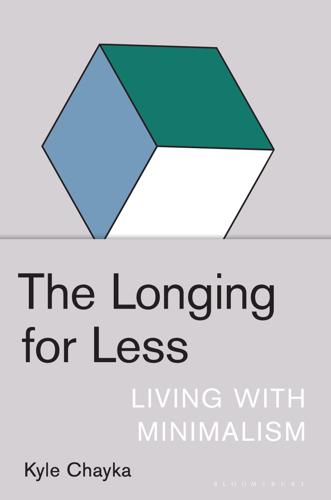
The Longing for Less: Living With Minimalism
by
Kyle Chayka
Published 21 Jan 2020
Richard Florida’s Creative Class theory, circa 2002, made it common knowledge that artists are on the front lines of reviving urban spaces—a process also known as gentrification. SoHo was the classic example. Judd and so many other artists demonstrated how factory loft living could be cool, giving postindustrial space a veneer of cultural capital that later made it possible for developers. Frank Gehry’s famous Guggenheim Museum Bilbao opened in 1997, a structure of arcing steel waves that became one of the largest museums in Spain, though the city was small. In the decade that followed, the museum’s instant landmark status, the tourism boom, and the artistic community that sprung up around it led to the coinage of the “Bilbao Effect.”
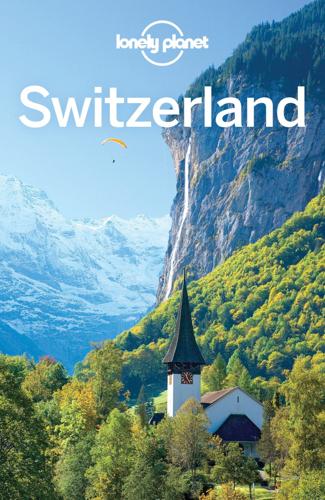
Lonely Planet Switzerland
by
Lonely Planet
Outside the Centre oVitra CampusMUSEUM ( GOOGLE MAP ; %+49 7621 702 3500; www.vitra.com/en-hu/campus; Charles-Eames-Strasse 1, Weil am Rhein; Vitra Campus adult/child €17/15, Design Museum only €11/9, 1/2hr tours €7/14; h10am-6pm) Showcasing the works of the adjoining, eponymous high-end furniture manufacturer, Vitra Campus comprises the dazzling Vitra Design Museum (of Guggenheim Bilbao architect Frank Gehry fame), the Vitra Haus and new-in-2016 Vitra Schaudepot (both by Herzog & De Meuron) and an ever-expanding bevy of installations by cutting-edge architects and designers, including Carsten Höller's whimsical, corkscrewing 30m-high Vitra Slide. Visiting is a must for serious lovers of architecture and industrial and interior design.

Radical Cities: Across Latin America in Search of a New Architecture
by
Justin McGuirk
Published 15 Feb 2014
See also École des Beaux-Arts, Paris Freedom to Build (Turner), 86–7 Frei, Eduardo, 91 ‘Fryscraper’, 42 Fuerte Apache (housing project), 39–40, 41 Fundación Amor por Medellín, 252 Gaviria, Aníbal, 256 Giuliani, Rudy, 226 Gómez, Enrique, 179 Great Britain. See United Kingdom Growing House, 201 Guatemala, 98 Guevara, Che, 21, 50–3 passim, 61, 62, 65, 155 Guggenheim Museum Bilbao, 15 Harvey, David, 135–6 Hollein, Hans, 146 Hornos de Cal Station, Caracas, 167, 168 Hylton, Forrest, 252n Iacobelli, Andrés, 18, 81, 97–8 Iglesia de Santiago Tlatelolco. See Santiago Tlatelolco Temple IMF. See International Monetary Fund (IMF) Indoamericano Park, Buenos Aires, 39 Informal City: Caracas Case (Brillembourg, Feiress, and Klumpner), 147, 163 Ingels, Bjarke, 14 Inter-American Development Bank, 115, 135 International Monetary Fund (IMF), 11, 57, 111, 178 International Wastewater Treatment Plant, 263 Iquique, Chile, 79–88 passim, 93–6 passim Jacobs, Jane, 11 Jailson de Souza e Silva.

Pocket Rough Guide Barcelona (Travel Guide eBook)
by
Rough Guides
Published 1 Mar 2019
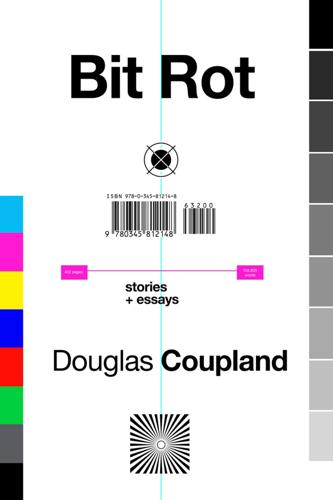
Bit Rot
by
Douglas Coupland
Published 4 Oct 2016
Overtop this, a woman’s voice with a slight British accent reads aloud a drunken email you once wrote to your old crush but never sent, leaving it in your Drafts folder. Then text comes up telling you how many steps you took that day, also telling you the farthest point you were away from home, and then something NSFW appears onscreen—and then suddenly you’re inside a mesh model of the Guggenheim Museum Bilbao, which lands you in the middle of a scene from The Garden of the Finzi-Continis, a scene on a tennis court. A crawl at the bottom of the screen reminds you that Wimbledon starts in a week. The screen fades to white and a montage of products appears, but it’s not advertising…it’s all the logos you walked past today while wearing Google glasses.
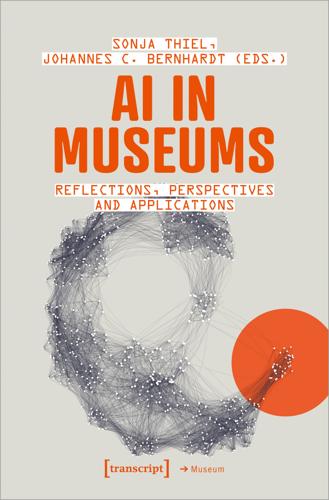
AI in Museums: Reflections, Perspectives and Applications
by
Sonja Thiel
and
Johannes C. Bernhardt
Published 31 Dec 2023
This change needs to be shaped actively by means of critical reflection, new perspectives, and concrete experiments—if the present volume can provide impulses and inspirations for this, its purpose will be more than fulfilled. Introduction Johannes C. Bernhardt and Sonja Thiel Dan Brown opens his 2017 novel Origin with an enigmatic scene: the main character, Robert Langdon, visits the Guggenheim Museum Bilbao to attend a spectacular revelation on the origins of humanity by the tech billionaire Edmond Kirsch. Upon arrival, Langdon is given a headset developed by Kirsch, the use of which is mandatory for all participants in the event in order to experience a personalized tour of the museum. After putting it on, the artificial intelligence Winston introduces itself, welcomes Langdon, and explains Kirsch’s idea: ‘He designed this system specifically for museums, in hopes of replacing group tours, which he despises.
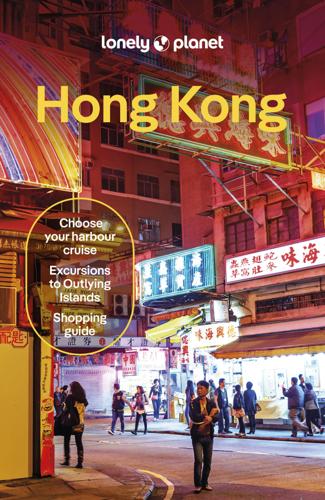
Lonely Planet Hong Kong
by
Lonely Planet
Lippo Centre Thanks to its unique facade, this distinctive pair of towers is called the Koala Building because it resembles koalas climbing a tree. Central Plaza Gaze at this gold, silver and terracotta towering behemoth. Head to the free sky lobby on the 46th floor for panoramic harbour views. Opus Hong Kong Admire the twisted 12-storey beauty by architect Frank Gehry who also designed the Guggenheim Museum in Bilbao. Drinking in Wan Chai: Cool Coffee Shops Blue Bottle Coffee: Artisanal joint serving single-origin coffees and home-roasted beans. 8am-7pm Mon-Fri, from 9am Sat & Sun Elephant Grounds: Sources quality beans from small farms worldwide. Exquisite brews. 8am-9pm Mon-Fri, from 9am Sat & Sun APT (A Personal Tailor): Customise your coffee order to how you like.
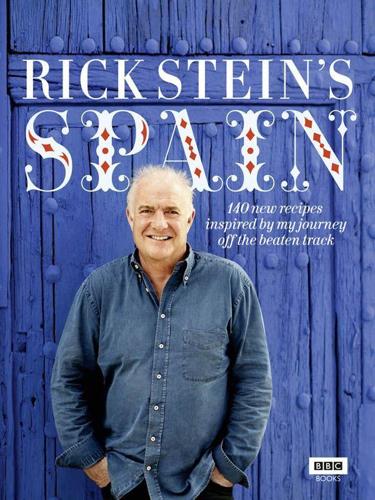
Rick Stein's Spain: 140 New Recipes Inspired by My Journey Off the Beaten Track
by
Rick Stein
Published 15 Dec 2011
Cities like Barcelona and Valencia are exciting places with entertaining architecture, like the all-glass Gas Natural building by the sea in Barcelona, which has part of its complicated mirror-like elevations built as though it has had a gigantic bite taken out of it by a shark. A marine theme results in the shimmering silver scales of the Guggenheim Museum in Bilbao, too, which has transformed a rather grey northern industrial city in the Basque country into somewhere stylish. Both buildings engage the viewer and give a sense of optimism and hope for the future. My problem is not that I don’t enjoy this new Spain, it’s just that I’m still imbued with memories of Spain over my lifetime.

The Rough Guide to Finland
by
Rough Guides
Published 31 May 2010
Kiasma Museum of Contemporary Art Just beyond the Lasipalatsi at Mannerheiminaukio 2 is the Kiasma Museum of Contemporary Art (Tues 10am–5pm, Wed–Fri 10am–8.30pm, Sat & Sun 10am–6pm; €7, free first Wed eve of every month; www.kiasma.fi), a slightly forbidding, steel-clad and tube-like structure that looks from the side like a mix of the Sydney Opera House and the Guggenheim in Bilbao – a vaguely pretentious building for the usually functionalist Finns. Inside the catacomb-like interior are sweeping curves and well-lit hallways; on the ground floor natural light pours in from a variety of angles onto a brilliant-white interior that looks like it gets a new coat of paint on a weekly basis.
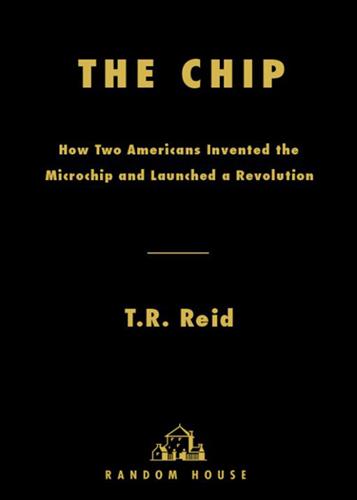
The Chip: How Two Americans Invented the Microchip and Launched a Revolution
by
T. R. Reid
Published 18 Dec 2007
J.J.’s own Nobel Prize, in 1906, seems to have satisfied him less than the knighthood he received two years later. When he died, at eighty-four, in 1940, he was buried in Westminster Abbey near the grave of Isaac Newton. Physicists talk about Thomson’s cathode ray experiment of 1897 the way architects talk about the Guggenheim Museum in Bilbao. The approach was elegant, the conclusion bold and stunning, and the result left an indelible mark on everything that came after. Thomson was determined to find out everything he could about that electric beam shooting through the cathode ray tube. Where did it come from? What was it made of?
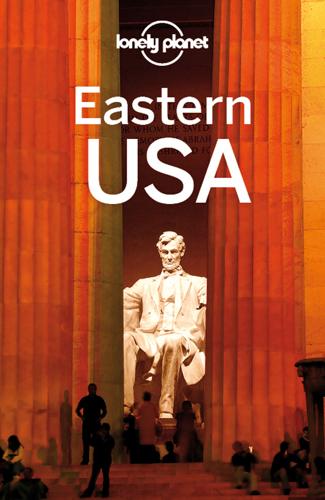
Eastern USA
by
Lonely Planet
For local information, check out the Roanoke Valley Visitor Information Center ( 540-342-6025; www.visitroanokeva.com; 101 Shenandoah Ave NE; 9am-5pm) in the old Norfolk & Western train station. The striking Taubman Museum of Art (www.taubmanmuseum.org; 110 Salem Ave SE; adult/child $7/4; 10am-5pm Tue-Sat, to 8pm Fri, noon-5pm Sun), opened in 2008, is set in a sculptural steel-and-glass edifice that’s reminiscent of the Guggenheim Bilbao (it’s no coincidence, as architect Randall Stout was a one-time associate of Frank Gehry). Inside, you’ll find a superb collection of artworks spanning 3500 years (particularly strong in 19th- and 20th-century American works). Currently undergoing a massive $27 million renewal project, Center in the Square ( 540-342-5700; www.centerinthesquare.org; 1 Market Sq; 10am-5pm Tue-Sat, from 1pm Sun) is the city’s cultural heartbeat, with a science museum and planetarium (adult/child $8/6), local history museum (adult/child $3/2) and theater.

Plutocrats: The Rise of the New Global Super-Rich and the Fall of Everyone Else
by
Chrystia Freeland
Published 11 Oct 2012
His first foreign commission, the Vitra Design Museum in Germany, was in 1989, six years after Bunshaft’s big international gig. But what was a nightcap for Bunshaft was the main course for Gehry. Since 1989, half of his work has been outside the United States, including landmark buildings like the Guggenheim Museum in Bilbao. Gehry is more than an architect—he is a starchitect, a neologism coined to describe the small band of elite international architects whose personal brands transcend their buildings. He has appeared in Apple’s iconic black-and-white “Think Different” ad campaign, parodied himself on the Simpsons, and helped Arthur and his friends build a tree house on the children’s cartoon.

Lonely Planet Panama (Travel Guide)
by
Lonely Planet
and
Carolyn McCarthy
Published 30 Jun 2013
Museo de la Biodiversidad MUSEUM (Museum of Biodiversity; www.biomuseopanama.org; Causeway) Pending inauguration in 2013, the Museo de la Biodiversidad is set to be a landmark museum with extensive botanical gardens. Biodiversity is celebrated with vivid visuals, and outdoor and ocean exhibits. World-renowned architect Frank Gehry, who designed the Guggenheim Museum in Bilbao, Spain, designed this controversial structure of crumpled multicolor forms. It’s located near the tip of the Causeway. Parque Recreativo Omar PARK The biggest park in the city is filled with children, joggers and the occasional salsa class. Located in Omar, behind the San Francisco neighborhood.
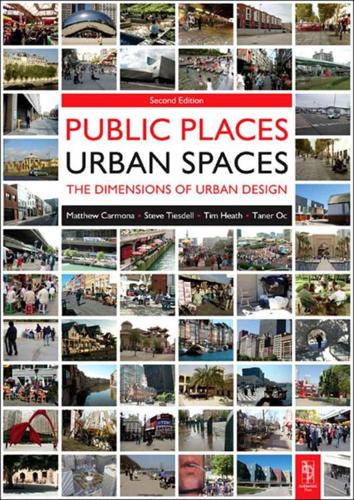
Public Places, Urban Spaces: The Dimensions of Urban Design
by
Matthew Carmona
,
Tim Heath
,
Steve Tiesdell
and
Taner Oc
Published 15 Feb 2010
Exploiting the ability of computers to draw, and then to construct, convoluted and twisted shapes and structures, Post Urbanist projects are ‘bold and experimental’, ‘predictably unpredictable’, relishing the chance to ‘violate existing typologies’ (Kelbaugh 2008a: 108, 110) (FIGURE 2.12 and FIGURE 2.13) (see Chapter 7). FIGURE 2.12 Business School, Case Western University Campus, Cleveland (architect: Frank Gehry) (Image: Steve Tiesdell) FIGURE 2.13 Guggenheim Museum, Bilbao (architect: Frank Gehry) (Image: Matthew Carmona) Yet Kelbaugh (2008a: 113) also laments how Post Urbanism is ‘… too often an urbanism of trophy buildings, of which a city needs and can absorb only so many.’ He questions whether ‘despite their theoretical and aesthetic sophistication’, they ‘… give back as much as they take from the city around them.’ (2008a: 109).
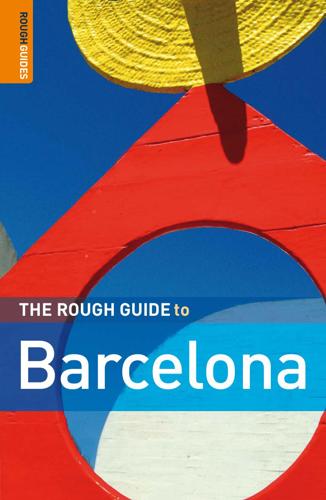
The Rough Guide to Barcelona 8
by
Jules Brown
and
Rough Guides
Published 2 Feb 2009

USA Travel Guide
by
Lonely, Planet
For local information, check out the Roanoke Valley Visitor Information Center ( 540-342-6025; www.visitroanokeva.com; 101 Shenandoah Ave NE; 9am-5pm) in the old Norfolk & Western train station. The striking Taubman Museum of Art (www.taubmanmuseum.org; 110 Salem Ave SE; adult/child $7/4; 10am-5pm Tue-Sat, to 8pm Fri, noon-5pm Sun) , opened in 2008, is set in a sculptural steel-and-glass edifice that’s reminiscent of the Guggenheim Bilbao (it’s no coincidence, as architect Randall Stout was a one-time associate of Frank Gehry). Inside, you’ll find a superb collection of artworks spanning 3500 years (particularly strong in 19th- and 20th-century American works). Currently undergoing a massive $27 million renewal project, Center in the Square ( 540-342-5700; www.centerinthesquare.org; 1 Market Sq; 10am-5pm Tue-Sat, from 1pm Sun) is the city’s cultural heartbeat, with a science museum and planetarium (adult/child $8/6), local history museum (adult/child $3/2) and theater.
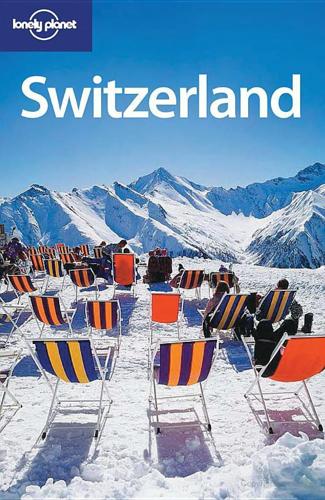
Switzerland
by
Damien Simonis
,
Sarah Johnstone
and
Nicola Williams
Published 31 May 2006

Frommer's Los Angeles 2010
by
Matthew Richard Poole
Published 28 Sep 2009
The Walt Disney family insisted on the best and, with an initial gift of $50 million to build a world-class per formance venue, that’s what they got: A masterpiece of design b y world-renowned architect Frank Gehry, and an acoustical quality that equals or surpasses those of the best concer t halls in the world. Similar to Gehry’s most famous architectural masterpiece, the Guggenheim Museum in Bilbao, the concert hall’s dramatic stainless-steel exterior consists of a series of undulating curved surfaces that partially envelop the entire building, presenting multiple glimmering facades to the surr ounding neighborhood. Within is a dazzling 2,273seat auditorium r eplete with cur ved woods and a dazzling array of organ pipes (also designed by Gehry), as well as Joachim Splichal’s Patina restaurant, the hip Concert Hall Cafe, a bookstore, and a gift shop.
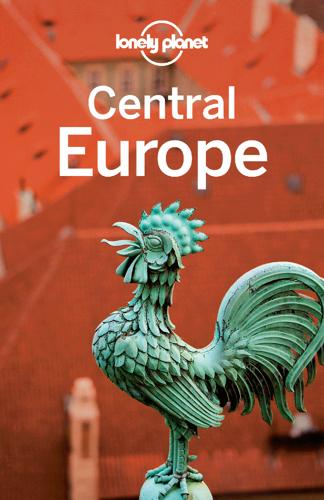
Central Europe Travel Guide
by
Lonely Planet
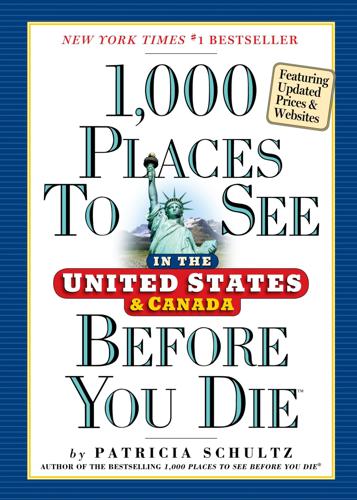
1,000 Places to See in the United States and Canada Before You Die, Updated Ed.
by
Patricia Schultz
Published 13 May 2007
Transformation AGO was triggered in 2002 when Kenneth Thomson, a leading Canadian art collector and businessman, donated nearly 2,000 works from his private collection to the museum. To accommodate the additions and bring the museum into the 21st century, the AGO engaged renowned Toronto native Frank Gehry, the architectural genius behind global projects such as the Guggenheim Museum Bilbao. The expansion includes a four-story tinted titanium-and-glass-faced wing overlooking Grange Park and a 600-foot-long glass and wood facade with 450 feet of sculpture gallery visible from the street. The museum’s significant European collection includes works by Tintoretto, Brueghel, Rembrandt, Renoir, Degas, Picasso, Gauguin, and Van Gogh, while its contemporary collection includes pieces by Andy Warhol, Robert Smithson, Gerhard Richter, and Claes Oldenburg.
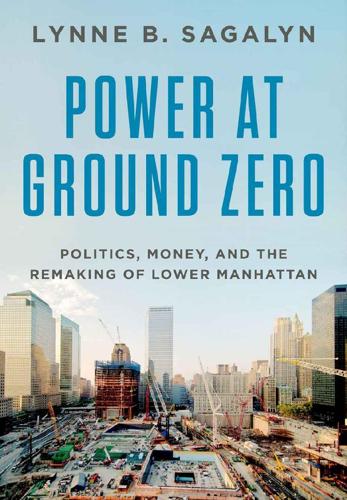
Power at Ground Zero: Politics, Money, and the Remaking of Lower Manhattan
by
Lynne B. Sagalyn
Published 8 Sep 2016
As a healing piece of the vision for rebuilding Ground Zero, the cultural program carried deep meaning: LMDC officials and planners wanted it to be a “living memorial,” a way to celebrate life through the arts and “infuse the redevelopment with hope and energy drawn from the human spirit.”1 Everyone agreed on the ideal, even family members of the victims of 9/11. All around the world, culture had taken on importance as a driver of economic transformation. It had become a well-established strategy. Museums were opening in all kinds of places, built as destinations; the celebrated Guggenheim Museum in Bilbao, Spain, designed by Frank Gehry brought worldwide attention to the phenomenon. Arts and culture were rooted in policymakers’ ideas of what makes a strong and attractive urban district, and cities everywhere were investing heavily in culture. The logic of using arts needed little emphasis in New York.
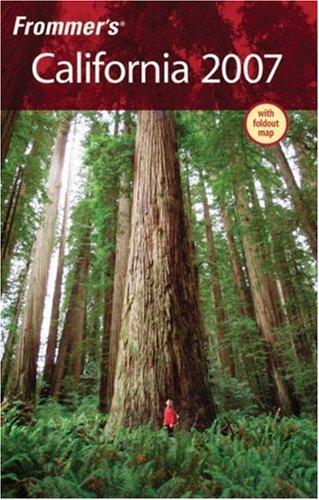
Frommer's California 2007
by
Harry Basch
,
Mark Hiss
,
Erika Lenkert
and
Matthew Richard Poole
Published 6 Dec 2006
The Walt Disney family insisted on the best and, with an initial gift of $50 million to build a world-class performance venue, that’s what they got: a masterpiece by Frank Gehry, and an acoustical quality that equals or surpasses the best concert halls in the world. Similar to Gehry’s most famous architectural masterpiece, the Guggenheim Museum in Bilbao, the concert hall’s dramatic stainless-steel exterior consists of a series of undulating curved surfaces that partially envelop the Walt Disney Concert Hall EXPLORING THE CITY 527 entire building, presenting multiple glimmering facades to the surrounding neighborhood. Within, a dazzling 2,273-seat auditorium is replete with curved woods and a dazzling array of organ pipes (also designed by Gehry), as well as a Joachim Splichal’s Patina restaurant, the hip Concert Hall Cafe, a bookstore, and a gift shop.
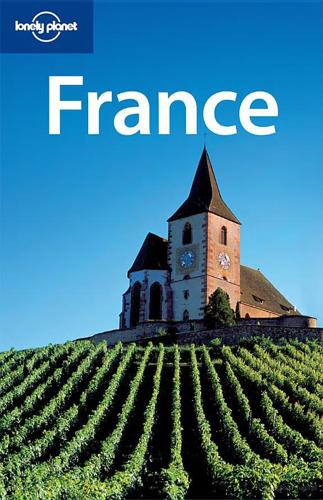
France (Lonely Planet, 8th Edition)
by
Nicola Williams
Published 14 Oct 2010
The design, by Shigeru Ban (Tokyo) and Jean de Gastines (Paris), is like nothing else ever conceived by the human mind. Locals hope the museum, covered by an undulating, translucent membrane of teflon-coated fibreglass designed to trap rainwater for irrigation, will do for Metz what the Guggenheim did for Bilbao. Until the grand opening, you can learn about the project at the Maison du Projet ( 1-8pm May-Sep, 11am-5pm Oct-Apr), next to the construction site. Tours The tourist office’s audioguides (€7), available in three languages (English, French and German), cover the city centre (1½ hours) and the Quartier Impérial (45 minutes).